Honi Soit
FIRST
What are EFRs?
Who is Barbi Ghanoush?
Being a Lab Rat Board Candidate Profiles
 Honi Soit USU, pages 8-11
Zoe Le Marinel Perspective, page 19
Iggy Boyd Analysis, page 13
Honi Soit USU, pages 8-11
Zoe Le Marinel Perspective, page 19
Iggy Boyd Analysis, page 13

FIRST
What are EFRs?
Who is Barbi Ghanoush?
 Honi Soit USU, pages 8-11
Zoe Le Marinel Perspective, page 19
Iggy Boyd Analysis, page 13
Honi Soit USU, pages 8-11
Zoe Le Marinel Perspective, page 19
Iggy Boyd Analysis, page 13
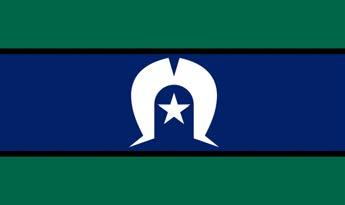
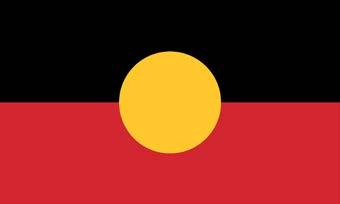
institution, predicated on the notion that Western ways of thinking and learning are superior to the First knowledges of Indigenous peoples.
Honi Soit publishes on the land of the Gadigal people of the Eora nation. Sovereignty was never ceded. All our knowledge is produced on stolen Indigenous lands. The University of Sydney is principally a colonial
At Honi Soit, we rebuke this claim, and maintain our commitment to platforming and empowering the experiences, perspectives and voices of First Nations students. This basis informs our practice as a paper. As a student newspaper, we have a duty to combat the systems and mechanisms of colonisation.
Misbah Ansari, Katarina Butler, Luke Cass, Bipasha Chakraborty, Ethan Floyd, Veronica Lenard, Luke MešteroviĆ, Eamonn Murphy, Caitlin O’KeeffeWhite, Andy Park
Iggy Boyd, Ines Cheah, Eliza Crossley, Harry Gay, Marlena Holdernesse, Zoe Le Marinel, Tiger Perkins, Amna Sheikh, Will Thorpe, Danny Yazdani
Artists
Christopher Finnegan, Aidan Elwig Pollock, Margot Roberts
Front Cover
Veronica Lenard, Katarina Butler, Bipasha Chakraborty, Caitlin O’Keefe White
As student journalists, we recognise our responsibility as editors of a radical student newspaper to oppose the inherent racism and exclusivity of mainstream media outlets. We also uphold the struggle of other Indigenous communities worldwide and acknowledge that our resistance is intertwined.
As an editorial team of both Indigenous and non—Indigenous heritage, we are both victims and beneficiaries of colonisation. We are
committed to unlearning our colonial premonitions and working to hold current institutions accountable.

We are galvanised by our commitment to Indigenous justice.
Accountability is a flimsy word — it is ambiguous, ever-evolving and riddled with ideological differences. Dear readers, we found ourselves in the midst of accountability in the Langford Office for three consecutive days in the light of USU elections, but there’s no tiredness like the one induced by journalism. The student Board of University of Sydney Union is an important body for student voices: six people will get elected to represent the interests of students in the bureaucratic inferno that USyd is.
Student politics might seem trivial in the bigger optics of University workings, but Honi ’s role will always be to hold those in power to account. This, of course, can be messy in the filth of friendships, treachery, negotiations, factional interests and the complexities of everyday life. Hell, it’s an even more mentally gruesome task to acquaint yourself with politics, and make voting decisions. However, isn’t that what student democracy is? To be handed pamphlets and bombarded with filibusters on the candidate pool is not the burden it is made out to be: engaging in StuPol actually matters.
Go Bold, Go Bryson:
A decent slogan. Some repetition from the Liberal candidate. Only problem?
There’s nothing bold about Bryson. Only pandering to the colleges and bringing a “cokein-the-bubblers” style platform of construction. If only the Libs had policies as good as their slogan.
Bring Ben Back:
At least he’s honest. But in foregoing a reboot of his 2020 slogan, Ben has come up with a slogan that can only be described as gramatically weird. Honi wonders why Hines rejected rhe seemingly more sensible “Bring Back Ben.”
Join Julia: Boring.
K for K-Pop:
K-Pop is cool. A K-Pop-ified USU? Maybe less so. In light of K’s apparent switch from a joke candidate to a serious one, Honi doesn’t even know if K-Pop will be brought to the USU under a Philips reign.
Put Porter on Board: True. That’s the whole point, we guess.
This edition wants you to redefine and expand holding this University to account more than ever, and drench you in the pink hues of this year’s policies. Luke Cass and Ethan Floyd (p. 7) remind you why the USU matters beyond the fun of Welcome Week, and Marlena Holdernesse (p. 17), in her review of Queer Revue, asks us to reclaim the alleged crime of being queer. Iggy Boyd (p. 13) lays down the need to abolish the inequitable and problematic system of residential colleges.
Honi ’s work is to ask relentless questions about USU’s corporate ties, divestment steps, mutual aid support and job policies, especially for those who might be ignored in the big, yellow garb of this corporate body. We hope that you experience anger, laughter and an inexplicable urge to ask more questions than ever, because our journalism is incomplete without you.
You are everything, and we are just...
The Editors of this campus rag.
Victor’s Vector:
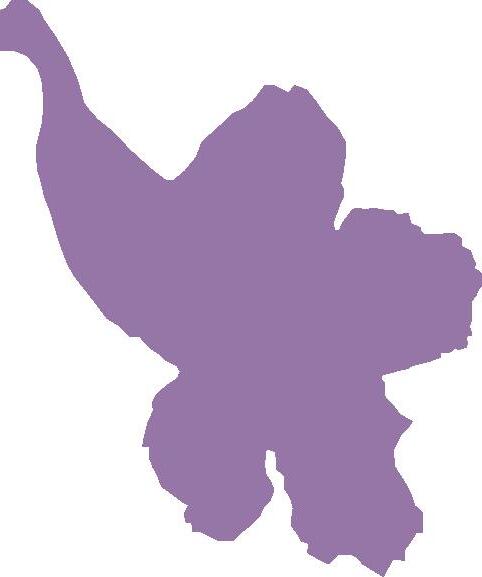
This arts student doesn’t get this one. Another loss for STEM students. But Honi thinks it’s about time that there is some enginering representation in the USU slogan game. As for the rest? That’s next week’s problem. We don’t know anymore. It’s been three days in here. Let us out.
Publications (DSP): Gerard Buttigieg, Grace Porter, Jasper Arthur, Simone Maddison, Victor Zhang, Xueying Deng.
expressions
they are not to be regarded as the opinions of the SRC unless specifically stated. The Council accepts no responsibility for the accuracy of any of the opinions or information contained within this newspaper, nor does it endorse any of the advertisements and insertions. Please direct all advertising inquiries to publications.manager@src.usyd.edu.au.
Wednesday 3 May
The Tin Knees // Oxford Art Factory, Darlinghurst // 7.00pm
Dear the Editors,
As a progressive Catholic, I found Angus McGregor’s article on religious institutions and taxation to be misleading:
First, there are 5.29 million Catholics in Australia at present, that is a population equal to one of our larger mainland states and more than Queensland combined. The $30 billion asset that is decried as too much is questionable given Catholicism plays a pivotal role in millions of lives in NSW. To put it in simpler terms, on a per person basis, that is less than a 10th of USyd’s endowment per student. The Church presided over the wellbeing, health and education of millions.
Further, If the logic goes that charities should not preach the faith (ie. the very definition of a faith), then by extension, charities should not advocate or be depoliticised. This cannot be further from their role, they are to advocate boldly for the most underrepresented in our society. McGregor also warns about the dangers of religious charities “proselytising” to people, this is very odd given that as Christians are called to act in accordance with “the name of the Lord” (Galatians 3:17) and boldly proclaim the faith.
As a test of the common good, Church worldwide educates hundreds of millions of people (including in Australia) producing excellent scientists + trains everyone from all walks of life. Think Georgetown, the Gregorian University, Ateneo de Manila, Campion Hall, or the Australian Catholic University here at home. The Jesuits have a powerful refugee advocacy arm in the Jesuit Refugee Service. And that’s before we consider the immense good contributed by other Abrahamic faiths, Judaism and Islam.
And then that’s before the sheer amount of weightlifting in communities outside of Sydney CBD. Parishes + religious congregations are communities where millions of people mark milestones and develop themselves beyond the atomised consumerism that dogs secular capitalism. Religious vocation,
bar the men corrupted by power, is one defined by a strong sense of public service and community good, that’s why ecclesiastics takes on the vow of poverty. Claiming that religious institutions (not merely just Christianity) overall contributes little to the public good is misleading and underestimate the value that faith plays in our lives.
Second, there’s no doubt that religious institutions, including the Catholic Church, are deeply flawed when it comes to appalling abuses and breach of trust. The disdain that Bishops and Cardinals show to survivors is risible, including the awfully late but timely L’Arche Review just this year. Canon law and ecclesiastical guidelines must change to prioritise and respect victims than assuming a fort mentality, doing otherwise is an abject betrayal in the eyes of the Lord.
The invaluable worth of faith is precisely why progressive Christians in the Church challenge the authority and dogma of those who cover things up. The Church and other religions live in the public square and must act as such. That does diminish religious authority in the hierarchy but it does not mean that religious institutions’ contributions to the public good is little. We call out racist border laws and queer religious people fight against homoand queerphobia precisely because our faith in God demands that we do so. We fight against the conservative current across all kinds of religious charities. To call, as Mcgregor suggests, for religious charities to be treated the same for taxation purposes as their secular brethren, looks at the contributions of religious life with a very naive lens. And one that, when lost, we will be looking at a far more fragmented and lost society.
Finally, Angus McGregor may be an admirer of the late Christopher Hitchens but we sometimes forget the dangers of New Atheism — a notably eugenicist movement (see Peter Singer, Richard Dawkins and A. C. Grayling).
Many thanks,
Khanh Tran



,


The old ladies in my Pilates class are so funny and talkative, and I want to be gym buddies with them. I’m not sure what old women are interested in, so I wanted to ask for your advice her or if you think the age gap will always be a divide between our gym-friendliness?
PS. Do you think the SUSF could install some sheer curtains in the back of their group fitness studio? The sun is so hot and overpowers the faint air conditioning in the room.
Pls send help,
Dear Jo,The pilates studio can be an intimidating place. As a fellow gym baddie, old ladies in the pilates class are my favourite. Ask them what classes they are going to, the silliness of your love life, how much weight they have been lifting and their favourite zumba grooves. I join them for their hangouts at the park and share an oat cappuccino, get them mats before the workout and refill their water bottles too.



And about SUSF, they better install some sheer curtains because those jacked backs need to be protected!
With flexibility,


 Misbah
Misbah
Shitfaced Shakespeare // Manning Bar, Camperdown // 7.00pm
Crash Test Dummies // Factory Theatre, Enmore // 8.10pm
Sigmund Troy’d // Manning Bar, Camperdown // 8.15pm
Thursday 4 May
Sophie May // The Lansdowne, Chippendale // 7.30pm
Friday 5 May
Mega Fauna // The Vanguard, Newtown // 7.00pm The Murlocs // Metro Theatre, CBD // 8.00pm
Crash Test Dummies // Factory Theatre, Enmore // 8.10pm
Saturday 6 May
Sigmund Troy’d // Manning Bar, Camperdown // 5.00pm
This is for Belgium // The Vanguard, Newtown // 7.00pm Shitfaced Shakespeare // Manning Bar, Camperdown // 7.00pm
Don Broco // Metro Theatre, CBD // 7.00pm
Sigmund Troy’d // Manning Bar, Camperdown // 8.15pm
Tuesday 9 May Songs For Lost Socks // The Vanguard, Newtown // 7.00pm
A USyd Open Learning Environment (OLE) unit has been found by students to have shared teaching materials that appeared verbatim on another site. The unit, OLET1309, is aimed at teaching students how to write simple scripts using JavaScript.
In a slide titled “JavaScript DOM –EventListener”, a series of lines of text from the W3Schools website have been included as a dot-point list.
The slide has since been updated to provide a reference for this material. A student in the course has shown Honi a picture of the slide before and after it was updated. Before the update, there was no reference to W3Schools, instead only referring to a Mozilla link.
W3Schools is a free online learning website, which provides guides in various coding languages including JavaScript. As a two credit point OLE, students are paying hundreds for content that is freely available on the internet.
A student in the course explained to Honi that this issue had not been directly addressed either on Ed Discussion or via email, and that the only change was the additional credit on the page for W3Schools.
A University of Sydney spokesperson told Honi that “We are committed to ensuring all of our course materials meet copyright rules and regulations and satisfying any attribution requirements. The content was inherited from a previous coordinator, and is now being removed.”
This issue was raised in a post made in the course forum, but the post was removed shortly after.
Before their withdrawal, Honi had not been able to successfully contact Hui Poi Lam. Nor were the USU, when Honi reached out earlier this week to try to find out their contact details.
The USU election will proceed with haste!
Approximately 40 student activists and community members gathered in the Quadrangle on Thursday to protest the presence of French defence and security weapons manufacturer Thales Group and fossil fuel giant Santos on campus.
The rally was chaired by Students’ Representative Council (SRC) Environment Officer Simon Upitis and SRC Education Officer Ishbel Dunsmore, who noted that “It’s great to see people saying no to war and no to fossil fuels.”
The connection between war and fossil fuels was a key theme of the rally, from the demand to sever ties with both Thales and Santos, to their joint role in the destruction of the planet and people.
Simone Maddison, SRC Director of Student Publications and education activist, contextualised Santos as Australia’s largest supplier of natural gas. “Despite their best attempts to position themselves as leading the way in sustainability in the higher education sector, USyd’s greenwashing amounts only to bandaids covering their structural commitment to fossil fuels,” Maddison argued.
This structural integration of the fossil fuel industry is a key concern not
just in Universities but across society, Maddison pointed out, as “The Native Title Tribunal last year ruled that the public benefit of Santos’ Narrabri Gas Project outweighed any cultural or environmental concerns of the Gomeroi people.”
On the Quad lawns, Jack Scanlan, SRC Disabilities Officer and education activist said that “Australia collectively has failed to fight the fossil fuel lobby.”
“Not only have we not fought it but the government has actively propped up what should be a dying industry with enormous subsidies, subsidies that dwarf historically what has been given to renewable energy,” Scanlan continued.
Nick Dean, long-time anti-war activist and convenor of the Marrickville Peace Group, said that “war is the very epitome of social and environmental destruction. Should the wars we are being told to expect break out, they will inevitably accelerate the climate crisis.
“Military strategists and the governments they serve foresee instability on a global scale. They fear they may lose control and so how do they maintain it? Through the power that comes from the barrel of a gun.”
After marching to the F23 building, the crowd gathered outside the office of USyd Chancellor Belinda Hutchinson,
who, as Dunsmore noted, is also the current Chair of Thales Australia.
In 2017, just two years after her appointment to their board, Hutchinson and the University signed a Memorandum of Understanding with Thales and in late 2022 they extended it, further enmeshing the University and the military sector.
SRC Education Officer Yasmine Johnson concluded the rally by condemning the higher education sector for their increasing militarism. Catriona Jackson, chief executive of Universities Australia, “recently spent a week in Washington offering the support of the higher education sector in preparing for war,” Johnson said.
“Students go to uni to get a quality education, not just to be churned out as a cog in the military machine, which is exactly what happens when unis have memorandums of understanding with weapons manufacturers.”
Johnson also denounced the Albanese government’s decision to spend “a further nineteen billion dollars as part of a ramp up in defence spending with a large proportion going towards enhancing Australia’s long-range missile strike capacity. This is in addition to the [over] $360 billion already committed to the AUKUS submarines.”
The Sydney University Postgraduate Representative Association (SUPRA) has voted for a one-year trial of a Carer Officer.
The main aim of the role is to identify the needs and priorities of postgraduate student carers at USyd, and to investigate what changes can be made to better support these students. A report with future recommendations will be compiled at the end of the term, following consultation with carers.
Carers are defined as people who look after a friend or family member with a disability, mental illness, chronic condition, terminal illness, or who is a child or frail aged. Importantly, parents will also be included in the remit of the Carer Officer.
Currently, postgraduate carers are represented in SUPRA by the Women’s Officers and Disability Officers — however, many carers themselves do not fall squarely into either of those categories. Carers have remained a
historically underrepresented section of the university’s population, and this translates to a lack of adequate support for students who have caretaking responsibilities.
The proposal was led by SUPRA’s Disability Officers, Eva Midtgaard and Gemma Lucy Smart.
In a statement to Honi, Midtgaard outlined the difficulties in her experience of being a parent and student at the University while undertaking a higher degree by research.
“My stipend did not have any legal hours for me experiencing health related issues due to my pregnancy. I had to defer my studies, meaning I had no income, due to pregnancy related health issues.
These issues continued after Midtgaard’s child was born. There was nothing in her contract related to maternity leave, nor were there suitable breastfeeding options on campus.
“Carers will be some of the busiest students because they are not only caring for themselves and their studies, but they are also looking after someone else. Yet, these students seem to be completely forgotten and left to fend for themselves because the system is not designed to take their needs into consideration.”
While SUPRA will focus on postgraduate students, the recognition of the importance of representing carers at USyd marks a significant moment in advocating for their needs at the University.
Honi Soit is interested in talking to more students with caretaking responsibilities about their experiences at USyd. If you would like to share your experience or have any further information about student carers, please reach out at editors@ honisoit.com, or send us a message on Facebook or Instagram.
Staff at Federation University have voted to take three days of rolling strike action in the first week of May, which will coincide with the National Tertiary Education Union’s (NTEU) National Week of Action.
The triple 24-hour stoppages will occur between 2-4 May at the University’s Berwick, Mt Helen and Churchill campuses. Rallies will be held at 12:30 p.m. each day.
Members of the NTEU’s FedUni Branch voted to take strike action due to the University’s failure to meet key demands in ongoing enterprise bargaining.
The Victorian university is offering staff what amounts to a 2.2% per annum pay rise, despite inflation persisting at seven per cent. This offer is lower than inflation pay rises offered at many other Australian universities, including at the University of Sydney. The NTEU is seeking a pay rise which would equate to a 3.3% annual pay rise, across the likely 54-month long agreement.
FedUni NTEU Branch President Matthew Abbott said in a statement, “this is not just a ‘lowball’ salary offer, but a genuinely disrespectful one.
“Staff members are dealing with the impacts of inflation and rises in the costs of living, after accepting a low offer from senior management in the last round of bargaining.”
University management are refusing to allow staff the right to disconnect — a position which the Union claims is unenforceable. They are also refusing the Union’s demands to offer better protections against the outsourcing of work, fairer classification of professional staff, and for 17% superannuation for casual employees (although has indicated the potential for this position to shift).
Improved parental leave, casual conversion and First Nations staff hiring processes are issues still being discussed between the parties, as are redundancy policies and consultation requirements which would improve job certainty for staff.
NTEU Industrial Organiser at FedUni, Colin Muir, said “It is beyond disappointing that the university
continues to reject our reasonable proposals on these issues… They say they want FedUni to become an ‘employer of choice’ in the regions, but they are not prepared to make the changes required to achieve this.”
While its 2022 annual report had not been published at the time of writing, FedUni recorded a $33.1 million operating surplus in 2021.
“The university has very substantial cash reserves and can easily afford a fair wage increase,” Abbott said.
“It is beyond time for the university to invest properly in staff, high quality teaching, and proper student support. This is the only way to make our university sustainable.”
Staff at universities across Australia will strike in the first week of May, as part of the NTEU’s National Week of Action.
Members of the NTEU at the University of Sydney were set to also take three-day strike action in the first week of May, before choosing to call off the Week Ten strikes at a recent Branch meeting.
Aboriginal Legal Services (ALS) from NSW, ACT, Victoria, South Australia, Western Australia, Queensland, the Northern Territory, and Tasmania have released a joint statement calling for $250 million in urgent government funding to avoid a freeze on services.
Demand for the ALS in NSW/ACT has doubled over the past five years, but government funding for the peak body has declined. ALS staff, lawyers, and caseworkers are under greater pressure than ever before.
In a media release, Aboriginal Legal Service (NSW/ACT) CEO Karly Warner stated that “all Aboriginal and Torres Strait Islander Legal Services around Australia are being forced into difficult decisions to mitigate this workload crisis.
“We’re taking action to protect the physical and mental health of our staff so they can continue delivering the highquality services our clients deserve.”
Established in Redfern in 1970 by a group of Indigenous activists, including Paul Coe and Gary Foley, the Aboriginal Legal Service has a long history of being a critical legal resource for Aboriginal and Torres Strait Islander communities.
The University of Otago has announced that it may make hundreds of academic and professional staff redundant and forecasted the possibility of further job cuts, citing a drop in enrolments.
“More job cuts are likely later in the year,” Acting Vice-Chancellor Helen Nicholson told students in an email.
The New Zealand university will begin taking applications for voluntary redundancies this week, with subsequent compulsory redundancies likely.
Nicholson said that the redundancies were due to a number of factors including a drop in student numbers and insufficient government funding. She said that this meant the University was forced to make “hard decisions” in an attempt to reduce its operating budget by $60 million annually.
The University has since confirmed that enrolments have reduced 0.9% in 2023 compared with 2022. It said that it had budgeted for 4.9% more students than have enrolled this year.
Nicholson said that the University is considering further moves, including selling assets and reducing course offerings in a bid to “fix [its] current financial issues.”
Today, the ALS provides legal advice and representation to Aboriginal and Torres Strait Islander people, offering a multitude of services in criminal law, care and protection law, and tenancy disputes. Between NSW and the ACT, the ALS employs more than 250 fulltime staff across 25 locations.
In 2015, the organisation’s government allocation was slashed by seventeen per cent of its yearly budget, equating to $3.15 million in lost funding. These cuts catalysed a successful campaign to save the ALS. Now, it is sounding the alarm again, claiming the service is on the “brink of collapse.”
This follows a pattern of roundly criticised government spending, including a $240 million allocation towards a stadium in Hobart. Hobart already has a stadium. More notoriously, the Albanese government’s $368 billion AUKUS deal further decries the situation ALS staff and clients now find themselves in.
As of Friday, the ALS has been forced to freeze some services across multiple locations in regional Australia — with more services expected to be slashed if much-needed funding does not arrive within the next four weeks.
“This will lead to more Aboriginal and Torres Strait Islander people in custody, more families being torn apart by child removal and family violence, more children in prison and more intergenerational trauma,” explained Warner in an email.
In Queensland, four communities have frozen their services until at least 30 June. Locations in the Northern Territory are also under pressure, experiencing significantly greater caseloads since the strengthening of bail laws earlier this year.
In the NSW areas of Byron Bay, Eden, Forster, Junee, Lithgow, Moss Vale, Muswellbrook, Scone, Singleton, Temora, Tenterfield, West Wyalong, and Wauchope will be without criminal law services — including representation for juveniles — from 15 May.
Aboriginal Legal Services across the country are holding an emergency meeting this Wednesday 3 May at 3pm to call for government funding to resume. Attorney-General Mark Dreyfus and Minister for Indigenous Australians Linda Burney are expected to attend, and will likely face interrogation by ALS executives over the current crisis.
“We will proceed carefully and expect to be able to share more information in the next couple of months,” Nicholson said.
Members of the Otago Tertiary Education Union voted during COVID lockdowns in 2020 to not seek a pay rise to protect the University’s finances.
Union organiser Philip Edwards told the Otago Daily Times that the University’s response was “illuminating” and that “we will want to save every job that we possibly can and yes, we will engage in some kind of action,” although noted that it did not know enough about the redundancies to make specific decisions.
“The problem for us is, if they are talking about hundreds of jobs … what does a university that has 4000 [fulltime equivalent staff] look like when you remove 500 or 600 staff from it?”
Forecasts of financial issues by Australian universities were used in 2020 and 2021 to justify substantial cuts to staff jobs, despite eventually recording a collective $5.3 billion surplus in 2021.
Huddled in a boardroom on the second floor of the Holme Building, the USU Board gathered for its third board meeting of the year on Friday.
The USU is planning $170,000 worth of new food initiatives such as six dollar meals and free food truck events that have graced Eastern Avenue in recent weeks. Immediate Past President Prudence WIlkins-Wheat said that they “love it” and “always take advantage of it,” with President Cole Scott-Curwood adding that he “really like[s] it too, because it’s so cheap.”
So far this year, 3,500 free meals have been delivered to students, out of 10,000 promised by the board. Advertising for the role of Foodhub supervisor has also been released online, meaning that the program can expand to a “breakfast club”. Students will be offered a free breakfast on Tuesdays and Thursdays between 9-11am, with the intention that they will then be able to access Foodhub afterwards.
The Board touched on an incident in which a staff member defrauded the USU, stealing money from its laden coffers. They explained that rather than taking the incident to the police and imposing formal penalties on the individual, they are taking a “compassionate approach” by offering the individual a payment plan.
As a result, the USU has made efforts to ensure that a similar incident doesn’t happen again. So much so that CEO Andrew Mills has identified his
focus for this month to be “risk”.
The USU is in the process of protecting their logo via copyright, which was not done until now. This led to an occasion last year in which the USU logo was used to promote a competition promising a free MacBook to students. They are also negotiating with the University to gain rights to use their logo to make merchandise.
Audit season is in full bloom
A large part of the meeting revolved around the recent audit completed by the USU. Auditors reported that there were “no material misstatements” with the exception of an error on the balance sheet that had to be corrected, and the aforementioned instance of fraud.
At the close of this section, Alexander Poirier asked if there was any progress on club and society audits, to which both Scott-Curwood and David Zhu replied that “this is a completely different type of audit.”
Scott-Curwood then moved the Board forward to financial reports. The USU appears to be in a good position, requesting further capex funding to continue supporting students.
They also reported that they are changing investment firms, as part of their move towards divestment. They have made changes to their investment policy, including appointing a new investment manager and approving the proposed investment plan. The USU will be divested from unethical sectors by June 30, with further acquisition to continue through 2023.
Around 1500 unionists and activists gathered at Belmore Park today before marching to Hyde Park to mark International Workers’ Day. A contingent consisting of the USyd Student Representative Council, Education Action Group and Women’s Collective attended the rally.

May Day, also known as Labour Day, is an international day of celebration of workers’ rights and the union movement, with origins in Second International’s support for the eighthour working day and the American Federation of Labor.
The protest had a strong union presence, including a large contingent of construction workers who walked off work to attend the rally. Members of the Australian Paramedics Association, NSW Plumbers Union and Maritime Union of Australia, among others, also attended. A minute’s silence was held for late paramedic Steven Tougher, who was murdered in Campbelltown
with his funeral held simultaneously in Wollongong.
Speakers called for laws formulated by the Australian Building and Construction Commission, established in 2016 and abolished by the Labor government, to be repealed in New South Wales. Speakers commended the recent strikes including those by teachers, public servants, construction workers and railway workers.
Speakers also expressed support for the Gomeroi people fighting the Santos gas project in the Pilliga region, highlighting the need for a “just transition” to renewables and noted the upcoming march in Port Kembla on May 6 against a proposed submarine base, denouncing AUKUS and imperialism by the Australian government and others. Protestors called for “real” wage rises and general strikes across the country, as well as a denunciation of the Fair Work Act as “an anti union law” which smashes
Some of the finer points of the meeting involved an amendment to the process of passing circular motions: instead of unanimous assent for these (largely administrative) motions, the Board will now require that two-thirds of Board Directors vote in favour of circulars.
Madhullikaa Singh then asked if there was any risk to reducing the majority, to which Scott-Curwood replied that if Directors were uncomfortable with anything passed via circular motions, they were able to make it a regular motion instead. Adding to this, Mills noted that it was a more practical way to manage “simple, procedural” circular resolutions.
Naz Sharifi kicked off the reports, saying that updates to the ethnocultural room were well underway. She congratulated the food and beverage team for the diversity of cheap food options on campus, particularly the inclusion of Halal, Kosher and vegetarian options at the food truck.
Alexander Poirier spoke about the queer and disabilities portfolios. They noted the passing of Lesbian Visibility Day, saying it was “nice to see all the lesbians”.

Poirier was unsure of any queer events coming up. Mills reminded him that the Queer Revue was happening that weekend.
Mesterovic report.Poirier then mentioned that the Disabilities Collective will be releasing a report on the upcoming Disabilities Space. Additionally, when asked about the expected opening date for the space, he reported that while USyd had said it could be expected in September 2024, when pushed they amended it to September 2023. Finally, Poirier said that there will be a Disabilities Week next semester.
Singh delivered a report on the Enviro Fair, saying that it was changed from Enviro Week to allow it to continue beyond a week. She said that the speaker series was successful, workshops were effective, and thanked the marketing team for their work redesigning the event.
Singh also noted that she is working with SUPRA, USyd Student Life and The City of Sydney on an event to celebrate 100 years since the first international student arrived on campus.
Finally, question time came. Honi asked whether the USU had an issue with staff retention in light of Rebecca Sanhi’s retirement and changes within hospitality outlets. Mills reported that they were working hard not only to retain but to recruit new staff, particularly with graduation festivities approaching. He noted that there were 500 casuals employed by the USU, and that they receive benefits such as a meal card.
The Board will next meet on the last Friday of May. Honi looks forward to the free food.
Will Thorpe reports.
unions and workers rights.
USyd SRC Education Officer Ishbel Dunsmore said “[W]e believe as a fighting student union our power lies in the streets, fighting for our rights and for workers’ rights.”
USyd SRC Women’s Officer Alev Saracoglu highlighted the connections between the labour movement and women’s liberation.
“[O]ur purpose for attending is to show solidarity and throw weight behind the labour movement, and to take back salient political points from the day and work to incorporate that within our own organising - like better incorporating the cost of living crisis into our anti-college campaign.”
“Considering the attacks we’ve seen on the public sector — which their wage cap exacerbates — especially those in feminised labo[u]r like nurses and teachers, we particularly feel like our collective has a role to play in building
support and working to connect those struggles in the hopes of potential general strike.”
The rally ended with speeches giving way to the protestors singing “Solidarity Forever”.
This week, campaigners will take to Eastern Avenue (and all the places you’ll go to avoid it) in an attempt to elect their friends or faction to the University of Sydney Union (USU) Board. The USU has an enormous influence over the student experience at USyd — controlling millions of student money and organising and funding a vast array of events and programs that students use every day. The chance to get a share of this power is why all the people you haven’t spoken to since first-year are texting you and all those people are out and about wearing fluoro shirts. But it’s also why you should pay attention to and vote in this election.


The University of Sydney Union (USU) is a student organisation at USyd which provides services and programs for students to improve their University experience on campus. As opposed to the Students’ Representative Council (SRC) and the Sydney University Postgraduate Representative Association (SUPRA) — which drive activism and advocacy on campus, representing undergraduates and postgraduates respectively — the USU fulfils its role for undergraduate and postgraduate students alike.
For students beginning at University, the USU’s Welcome Fest — held at the beginning of both semesters — is likely their first experience with the USU. The USU is in charge of organising Welcome Week activities, including stalls and events. It receives significant funding from University management to be able to do so.
The USU is perhaps best known for its clubs and societies program. Most clubs and societies at the University are affiliated with the USU and, in turn, receive funding which helps them operate. To join a club or society, students must be a member of the USU.
Most of the food and drink outlets on campus are operated by the USU. Venues such as Courtyard Cafe, Manning Hermman’s Bar and the Fisher Coffee Cart are all operated by the USU. The USU also operates retail stores selling USyd merch.
The USU’s building stock, including the Wentworth, Holme and Manning Building, are a key part of its operations. The USU rents out these venues, often to clubs and societies, and holds many of its events within


them. Autonomous (Ethnocultural, Queer and Women’s, with Disabilities soon to come) spaces can be found in these buildings.
In the arts, the USU supports revues. Identity revues (People of Colour (PoC), Queer and Womens,) are held in Semester One, and faculty (Arts, Business, Engineering, Law, Medicine and Science) revues in Semester Two.






PULP Magazine is funded and supported by the USU. Run by a Senior Editor (currently Marlow Hurst) and six editors, PULP is a culture focussed magazine and hopes to extend the reach of student media beyond the news and politics focus of Honi Soit. PULP returned to a print form in 2022, after it was started as an online-only publication in 2016 following the demise of the USU’s earlier in-print BULL magazine.
The USU’s Board, in the Union’s own words “is responsible for the operational and strategic business of the USU.” In practice, this means keeping an eye on all of the USU’s initiatives and shaping the Union’s overall direction.
Fourteen people sit on the USU Board. Of these, eleven are elected student Directors, two are Senateappointed Directors (students have no say over these appointments), and one is the Immediate Past President.
From the Board (normally, Directors in the second of their two-year term — which may change this year through candidate Ben Hines), five people are elected by Directors to the USU Executive. The Executive is composed of the President (currently, Cole Scott-Curwood), Vice President (Telita Goile), Honorary Secretary (Isla Mowbray) and Honorary Treasurer (David Zhu).
The Executive takes on an increased role within the operations of the USU. The President, in particular, is the Board’s spokesperson, and thus the most prominent member in the public eye.





Student directors of the USU Board are elected in elections in May each year. This year, in-person campaigning begins on 1 May. The polls open — USU members (a majority of USyd students) will be sent a link to their emails — on 9am Monday 8 May. They close on Friday at 5pm Later that night, the results will be announced by the Union and reported on by Honi
Notably, Senate-Appointed Directors do not get elected by students, despite them getting control over student money and what is, at least in name, the student union at USyd. The existence of Senate-appointed Directors and their influence over Executive elections has led to them being frequently criticised by the student body.
The USU plays a huge role on campus, and the decisions made by its Board and Executive have a direct impact on the lives of students at USyd.

This starts from the fact that the USU is allocated significant amounts of student money,
from the money students are required to pay through the Student Services and Amenities Fee (the SSAF). In 2022, the USU received $6.2 million in SSAF funds. On top of this, the USU generates large amounts of money from its operations, mostly its food and drink outlets. It had an overall revenue of $15 million in 2021. By comparison, the SRC — which itself has contested student elections in Semester Two — only received two million dollars in SSAF in 2022, and generates little other revenue.
But it is just only control of money which is why the USU, and thus its election, is important. It is also what it does, or could do with that money.
At each election, candidates will put forward a vision for the USU’s future. Each of those visions entail prioritising the various functions of the USU. Frequently, this looks like changing how the USU’s outlets operate (cheaper food, longer happy hours), measures to improve campus life (increased arts and performance, more parties). Other times, candidates promise a more activist USU: one which supports staff strikes and other activist causes and takes a more active and public stance on issues facing students.
In addition to this is how candidates offer visions for how the USU operates. Measures such as increasing accessibility for marginalised students, improving the relationship between the USU and clubs, and making the USU and its Board more transparent (a common criticism levelled at the Union) are all part of this.
Voting in this election means having a say in which of these visions you think should guide the USU and all its influence. It also means making sure that the elected student Directors are actually qualified for the role, and have the skills necessary to bring their visions to fruition.
Otherwise, USU elections can be entertaining. The stunts
Another year, another round of students vying for USU board! Watch out, coloured tee-shirts and stupol hacks are coming back to Eastern Avenue, and they want your vote. As annoying as being bombarded by their flyers, and (in some cases) earnest pitches may be, voting for the USU Board is important — this is a multimillion-dollar student organisation, after all (read page 2 for more).
Candidates were tested on their knowledge of USU history, student politics, the NTEU, and miscellaneous facts about student life. They were then interviewed about their policies and quiz answers. The edited video and unedited transcript are available on our website.
The quiz managed to separate candidates from the well-versed student
politicians, to allegedly “funny” joke candidates. More than half of the candidates couldn’t give the rate of HECS indexation, and many didn’t know the referendum question that will be put to the Australian public later this year. The candidates are listed below based on their scores on the Honi quiz.
This is Honi’s USU edition, however, two candidates, Julia Lim and Teng
Yong Khoo were unable to complete the quiz and interview before the paper was sent to print. Sargun Saluja completed the quiz, but was unable to interview. These candidate profiles will be posted online and their profiles will run in print in our next edition.
Voting for USU Board Election opens on Monday 8 May and registration to vote opens this Friday 5 May


Favourite USU Outlet: Laneway (according to Wallman the baked potatoes are underrated. Honi does not intend to find out.)
Grace Wallman provided detail and specificity in the Honi quiz, achieving a score of 91% — the highest of all the candidates.
Wallman has been extensively involved in student politics — she has served in numerous positions, including SRC Councillor, Officer and Convenor of the SRC’s Welfare Action Group, inaugural Disabilities Officer for SULS, FASS Student Representative on the Academic Board and Student Representative on the FASS Board. Wallman claims that her experience in both activism and clubs and societies positions her well to manage the requirements of the USU.
Wallman did not provide her policy statement to Honi prior to our interview, she clearly outlined progressive, left-wing policies and accompanied these with practical suggestions on how to implement them.


For example, when discussing improving the experience of students with disabilities, Wallman stated that she would like to see “a concrete plan of action with specific goals to do that. Having a disability inclusion action plan, more accessibility features on the website, having training for clubs and society’s executives.
“All of those more specific policies are really important, I think set me apart from the other candidates.” Wallman identifies that her lived experience, including choosing to openly identify herself as a student with a disability, also sets her apart from other candidates.
camera [privately held] meetings mean that individual Board Directors can’t be held accountable as you can’t see how they voted on any one particular issue.” Wallman expressed support for challenging a policy that prevents student media from being able to question individual Board candidates.
Slogan: Grow with Grace

Colour: (Switch) Yellow








Faction: Switch

Many progressive candidates promise strong political platforms with insufficient detail or structure on how they would achieve this. While
for increasing access to free sanitary products in “high traffic areas” on campus as a Director.




When asked about transparency in the USU, Wallman stated that she believed there were issues. “In-
It remains to be seen if Wallman continues to argue for greater transparency, should she be elected to Board. In the interview, Wallman stated that while she would remain in Switch, she would not be bound to them, and pledged her support to Madhullikaa Singh in the upcoming USU presidential election. Wallman was clearly committed to representing students as a Board member. Her high score on the quiz, coupled with the detailed answers in the Honi interview, indicate a selfevident competency. The polls will tell if this competency translates to action on Board.
: Put Porter on Board
Colour: Red
Faction: Unity


Favourite USU Outlet: Laneway
Grace Porter is running on a progressive platform backed by her faction, Unity (Labor Right). In the past, Unity has had success in USU elections with Connor Wherrett from the faction elected as President in 2019. Porter’s main policy points focus on service provision as “the capability to change student lives for the better.”
Porter’s vision includes a suite of progressive causes, such as improving sustainability practices in the USU. Her strongest policy point, as part of her feminist platform, was to “fight sexual violence on campus and within clubs and societies”. This included an anonymous reporting system that is “well publicised and accessible” involving professional coordinators to “help facilitate these incident reports”. Porter also said she would advocate
Like other candidates, Porter stressed the cost of living crisis and the USU’s capacity to provide “some tangible and immediate aid to students”. Her regular involvement in Foodhub is commendable, giving her knowledge of “what the day-to-day conditions are there”. Porter said she would push the USU to instate a full-time coordinator (not to her discredit, the USU has since begun advertising for this position). She also noted a potential increase in funding for Foodhub. Other policies included reducing prices at USU food outlets.
Apart from these specific pledges, Porter has policies similar to other candidates running on progressive platforms. Porter supports divestment from fossil fuel companies and other unethical industries, and pushing the USU to openly take a stance on political matters such as the NTEU strikes. In her policy statement, and in the interview, Porter emphasised “taking public stances on how our university management is threatening

With a high quiz score out of all the candidates at 79%, it’s clear that Porter has a strong level of institutional knowledge and experience. Porter has been involved in the SRC this year as a councillor, Sexual Assault and Sexual Harrassment Officer, and as the Director of Student Publications.
In terms of C&S experience, Porter is the current Women’s Officer in the Australian Labor Party Club, and is on the General Executive of the Waste Fighters Society. However, despite clearly supporting worthy causes such as supporting smaller clubs and societies, the mechanisms Porter suggested to achieve these aims weren’t as clear. When asked about what specific mechanisms would help support clubs and societies, Porter said “this could be anything from training courses to… events and zooms and increased funding.”
Overall, Porter brings a convincing campaign, and though her policies
could be better fleshed out, she displays an intention to advocate for progressive vision of the USU.
Slogan: Bring Ben Back
Colour: Gold

Faction: Independent


Favourite USU Outlet: Abercrombie Cafe (for the ginger fish).
Hines, first elected to the USU Board in 2020, served as Honorary Treasurer of the USU in 2021 after an ill-fated bid for President. By running again, Hines is setting himself apart from other Board candidates in recent memory.
Hines said he is seeking a second term because “the challenges facing campus and students in 2023 are immense.” He cites the cost of living and return of students to campus after years of COVID, saying “the USU has immense capacity to benefit these students… It needs to be done immediately. It needs to do so effectively.”
Ben Hines describes his politics as “progressive”, something — given his previous membership of the Liberal Party — he admits is surprising. He cited examples of implementing progressive policies in his roles as USU Treasurer and SULS President including implementing an Environmental, Social, Governance (ESG) investment review at the USU and focussing on accessibility at the Sydney University Law Society, of which he was
President in 2022.
Hines has policies centered on introducing equity schemes to the USU, “facilitating centralised sexual harassment reporting,” creating a USU Jobs Board, disability advocacy, increasing funding and reducing bureaucracy for clubs and societies, and a litany of others (including for international students, and “bringing campus culture back”).

In his interview, Hines showed detailed knowledge of the mechanisms required to implement these policies. This included the ways the USU could exert influence over the University (by renegotiating the Affiliation Agreement between the two), and how Board Directors could implement their policies in the day-today management of the USU (passing more specific motions to bind USU management’s course of action). The most interesting, and ambitious, of these was to change the USU Board’s culture to see itself as having a greater responsibility for the USU’s day-to-day operations, rather than deferring to management as “the adults in the room”.
However, the drawbacks to Hines as
a candidate are wellknown. He has long straddled the line between “independent” and “libdependent”, and the sheer fact that he is running for Board again reinforces the institution’s insularity. His answer regarding his rumoured desire to run for the USU Presidency in his first-year on Board (“I haven’t made a decision as to what my intentions are”) was markedly non-committal. Hines was also not clear on when he, in his sixth year of a law degree, already with a graduation yearbook profile, was graduating (“I can’t commit with certainty to exactly what that would look like… I could be here for two more years if things go, you know, badly in my life, for example.”)
While Hines had responses to all those concerns in his interview (the adequacy of which students can judge for themselves), they do go to the essential choice facing students: should they elect an experienced and competent candidate, even though he is evasive and evidently enthused by the prospect of holding positions of power across the University? Is electing Hines for a second Board term, then, worth it?
Slogan: Go Bold, Go Bryson
Colour: Turquoise

Faction: Liberal







Favourite USU outlet: Courtyard
A self-described classical Liberal, Bryson Constable is running an “apolitical” campaign with the intentions to separate the USU Board from political intervention. He identifies with the “broad church” of the Liberal Party, with a certain love for “turquoise” (not to be confused with teal).


Despite the political ambiguity of his campaign, Constable fared decently in the quiz at a score of 72%, with some institutional knowledge about the USU’s executive decisions, the SRC, and federal politics.
He is currently an SRC Councillor with Colleges for SRC, an affiliate of the national Liberal Party, a member of the Conservative Club, and an ex-officio campaigns manager of the Liberal Club. While his political
experience came in handy answering questions about Voluntary Student Unionism, HECS indexation and youth allowance, he lacked insight on the Indigenous Voice to Parliament Referendum, the current SRC Women’s Officers, and members of the National Tertiary Education Union.
Constable’s policies can be described as ambitious yet one-dimensional. His policy mentions renovating Manning, a recurring policy over the years, but did not mention the financial intricacies, details about the renovation, or tangible pathways to make this work. When asked about whether the money required to renovate Manning and introduce the construction of more “gazebos, barbeques and public spaces” would be better spent on expanding affordability options for students amidst the cost of living crisis, Constable said that the two were “not mutually exclusive” and that the renovations would “pay dividends.”
When asked how he would justify investing student money into the residential colleges, given that the colleges already possess a large amount of wealth and house residents who are generally privileged, Constable said that this was a “false narrative,” that it
would be a “tiny investment” and that the money will “come back to the University.”
Constable continually argued that politics and the USU “do not go hand in hand,” stressing the USU’s role as a service provider. When asked whether politics should play a role in determining USU corporate partnerships, Constable said that his job would not be to “comment on the validity” of claims against exploitative companies but he did admit there was a threshold where the USU should “think, first and foremost: are they war criminals?” He elaborated to say that he would weigh up the moral considerations of partnering with exploitative companies, alongside the question of whether a boycott of these companies would “drastically affect service provision.” He added that he thought claims that the USU is not transparent enough are “overblown.”
Constable has significant backing among campus Liberals and the colleges, with a decent quiz score and an interview that emphasised the depoliticisation of the Board. While his campaign may please
service from Tuesday and Thursday to all working days.
conservative students, students will have to judge whether his extensive construction plans and pledges to increase funding for college events are worth the price in the midst of a cost of living crisis.
59%

Favourite USU outlet: Abercrombie Cafe
Following Cole Scott-Curwood’s success in the 2021 USU election, Victor Zhang is seeking to increase STEM involvement on Board. Zhang’s campaign broadly reflects the policies and stances held by other candidates running on progressive platforms. Despite being involved in the SRC this year as a councillor and a Director of Student Publications, Zhang has minimal experience with clubs and societies, which he admits is a “weak point”.
He described disability advocacy as “something very close to [his] heart”. For both broader and cultural competency, he has proposed training for clubs and societies executives. Zhang’s campaign involves the USU committing to progressive stances on political issues, and he describes the workings of the USU as “inherently political”. He said that the USU “should absolutely stand in solidarity with the strikes”. Zhang also said that the USU should support preserving hybrid learning, and standing against Voluntary Student Unionism (VSU).
important that we actually reach people on that side of campus”. He also named this as the main factor differentiating him with other candidates. He said that this is “important because there are these services…for example, case workers, legal [and] the USU has Foodhub”. Despite being well-intentioned, some of Zhang’s policies were quite generic and often lacked specificity. For example, training programs for club executives are well-trodden ground, yet their efficacy remains unclear.
Slogan: Victor’s Vector

Colour: Blue

Faction: Engineers
His policies broadly focus on student welfare, and reflect his experiences with welfare provision. He volunteers at Foodhub “almost every week on Tuesdays” and it is the major initiative for his campaign. Zhang proposed a permanent position for a USU staff member to oversee the operation of Foodhub (not to his discredit, the USU has since begun advertising for this position). However, Zhang has also proposed to expand the
On transparency and the ethics of the USU practices, Zhang floated an idea about a way for students to communicate their issues through the USU app. “The USU as a whole should be very conscious about who they choose to partner with, there should be adequate research done to make sure that these aren’t firms that are really just against student interests,” said Zhang.
Zhang emphasised the value of having STEM candidates on Board as “vitally
Scoring 59% on the quiz, Zhang’s result showed gaps in knowledge about the USU, such as the Finance Director or the USU’s operating surplus in 2021. However, he did display sound knowledge on campus issues such as the NTEU strikes.

Although Zhang’s policies do not appear to be sufficiently sophisticated and he lacks some institutional knowledge, he is clear in his views and has a progressive vision of what the USU ought to do.
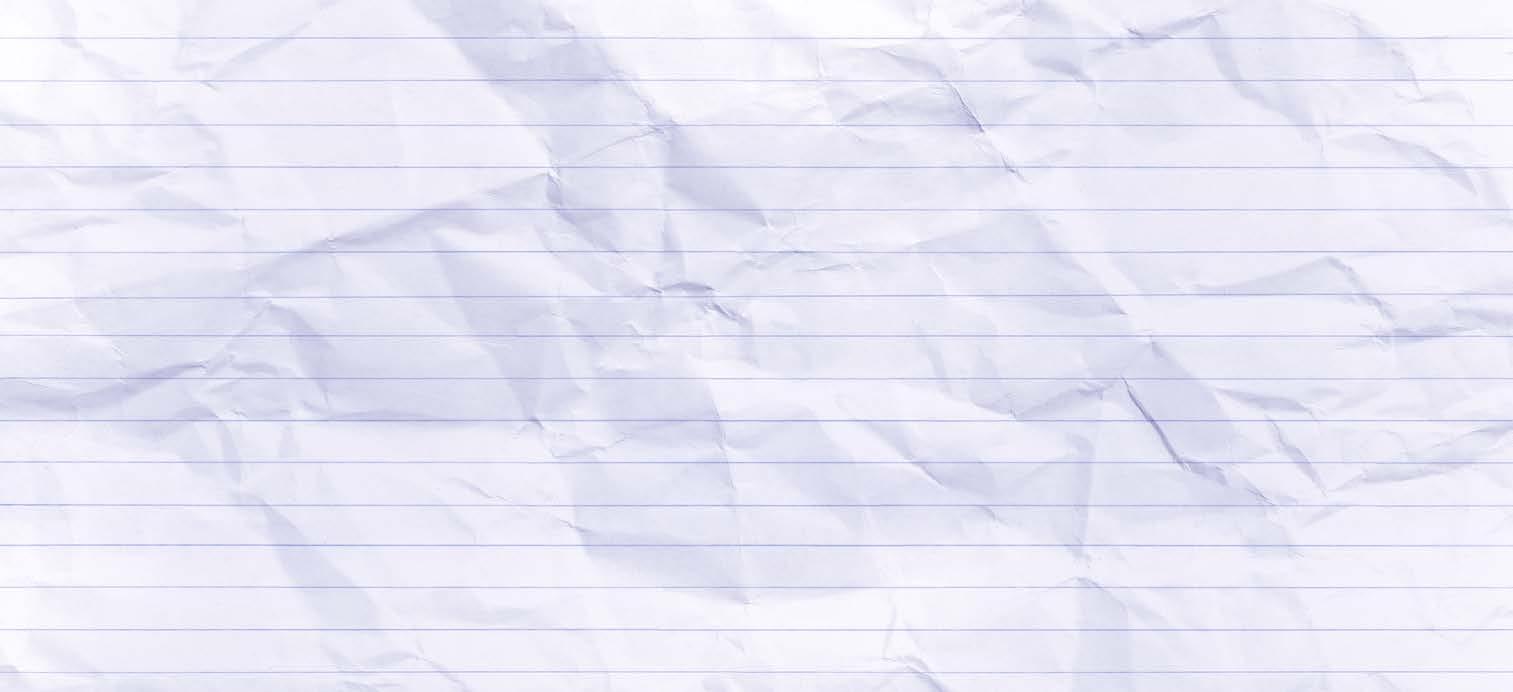
Colour: Black
Faction: Independent



Favourite Outlet: UniBros
Syed Ahmad Sabaat is running for USU as an independent candidate, with no past or current connections with campus factions or political parties. He says that this is a strength, saying that no ties to factions meaning he is “bringing something new to the table,” and that political factions “bring their own agenda” to the Board. However, his institutional knowledge is almost nonexistent.
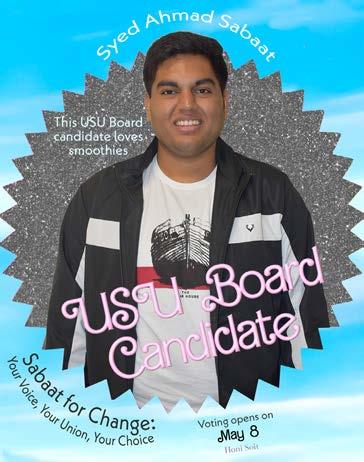
Sabaat, as an international student, positions himself as a candidate bringing cultural diversity to Board, saying he “understands the challenges international students face.” Increasing the USU’s accessibility, and its profile among less-engaged students, shapes his policy platform.
Sabaat divides his campaign promises into three parts: Empowerment and Inclusivity, Student Engagement and Well-Being, and Sustainability. His plans in the first section
include “making clubs and societies more accessible for international and Indigenous students.” In his interview with Honi, he also supported making campus life, particularly parties at Manning, more accessible to students with disabilities.
Sabaat was most enthusiastic about the student wellbeing aspect of his platform. He wants the USU to provide more jobs for students on campus (he supported paying V-team volunteers), and he envisages the USU hosting sessions on how students, particularly international, can navigate getting casual jobs in Sydney.
Sabaat thinks it is important for the USU to treat its staff as well as possible. He does not clearly provide for this other than promising to increase their rate of pay, and when faced with financial issues, endeavouring to avoid staff cuts. He says social issues “affect us either directly or indirectly,” and thus it is the USU’s role to publicly comment on them and take activist stances. This extends to the National Tertiary Education Union’s (NTEU) strikes.
He has policies to increase the functionality of the USU app, including an integrated
After external circumstances impacted K. Philips’ first run at USU, Philips is back again for another go. With a policy statement featuring a focus on providing K-Pop dance classes, photocards, and elevator music, Philips freely admits that their campaign began as a joke, but that they have since reconsidered and are now campaigning seriously.

payment system. He thinks the USU’s website does not befit a 21st century entity. Sabaat, a worker in the tech industry with a clear passion for these sorts of reforms, would clearly be eager to push for these changes if elected.
This said, students will naturally question whether Sabaat, who scored sixteen per cent on the quiz, actually has the knowledge required to be an effective director. His quiz scores were particularly weak in his knowledge of broader issues in the University, including at the Students’ Representative Council, and details of the NTEU’s strike campaign.
Sabaat’s ability to demonstrate how he would implement his policies was seriously lacking. While his emphasis on lobbying the University and increasing the USU’s outreach to students is admirable, it does suggest Sabaat has not yet come to grips with the role of the USU Board, and understood its ability to affect change within the organisation.
Ultimately, this leaves students with a choice: to vote for Sabaat because of his
volunteers, Philips said they would — quoting Rick and Morty to characterise the current V-team program as sounding “like exploitation with extra steps.”
care for students and lack of factional affiliation, or look to more experienced and knowledgeable candidates, who are likely better able to implement their visions for the USU.

16%
Slogan: K for K-Pop!
Colour: Purple








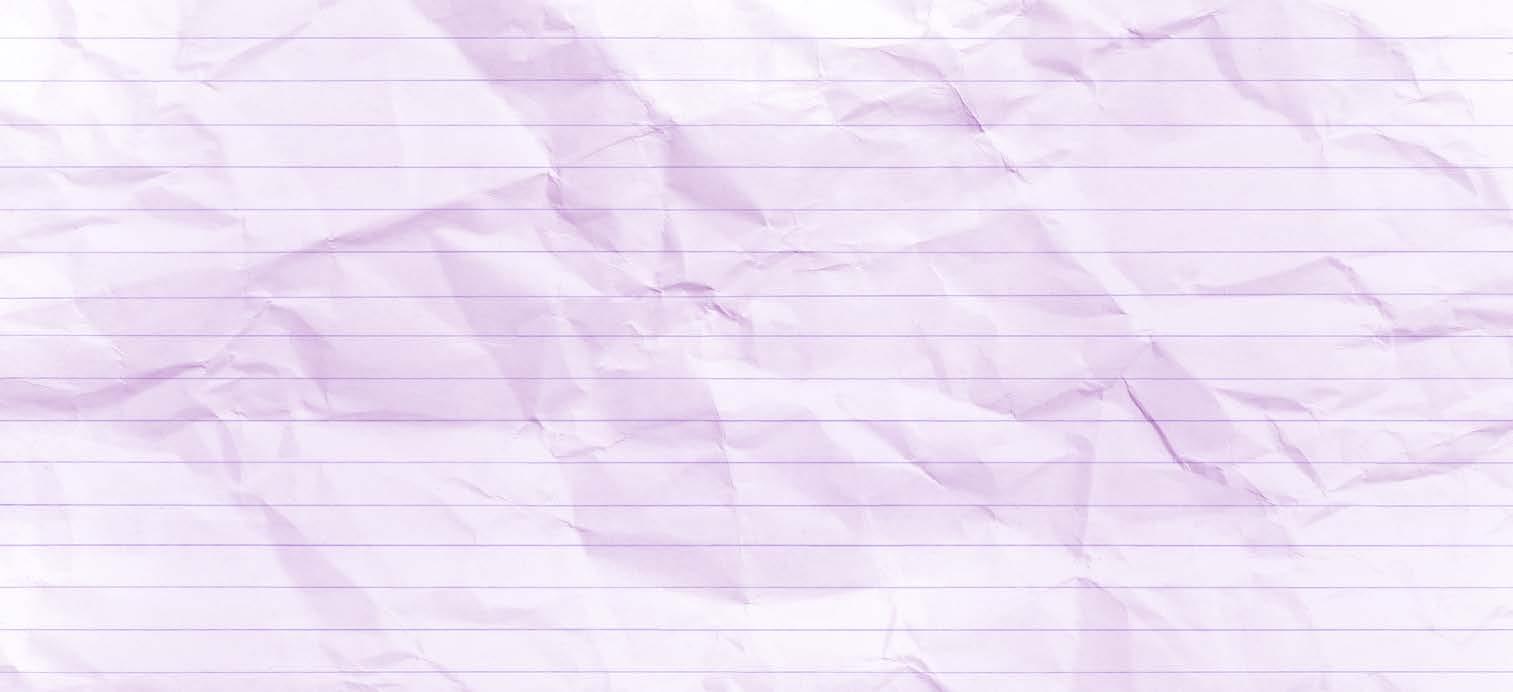


When asked what their current policies were, given that the USU website still contains joke policies, they directed us to their policy platform from last year. Philips summarised their key points as being focused on international student welfare and using social media to connect to students. They stated that their experience from previously studying a degree in marketing and their social media management makes them qualified to oversee this.
When asked if they would support a motion to pay the USU’s student
Philips also supported reforms relating to transparency within the USU, indicating that they supported the concept of Board Directors being able to comment on matters relating to the USU, as opposed to only the President, which is the current system.
While they still identify as a political centrist, Philips said that they support the recent NTEU staff strikes at USyd, and believed that the USU should play a role in educating students on why staff were on strike. They said they believed that this would help students be “empathetic towards the [NTEU] cause” and therefore “give more support to the movement, which would lead to better action taken.”
Although well-intentioned, Philips
possesses a serious lack of institutional knowledge required of a Board Director. They failed to name a single member of the current USU executive, or the current or any former USU presidents; they were unable to define what Voluntary Student Unionism was, give the minimum wage or how much the HECS indexation rate will rise this year. They added that if they were elected to the board, they “would definitely do better research.”
K. Philips is a candidate who boasts a wide variety of C&S experience which would be useful on board. Unfortunately, their lack of coherence on policy and minimal knowledge of issues relating to the USU makes them one of the least competent candidates running this year. Time will tell if their core message of utilising social media and international student support will resonate with students.
Slogan: Couldn’t Care Less? Vote Moore!
Colour: Lime Green

Faction: Commerce/Liberal adjacent.
Favourite USU outlet: None.
Upon invitation to the Honi office for his interview, Ben Moore set up shop in front of F23 with a folding table, two miniature chairs, and a glass of neon green coolant. Complying with our request to enter so as not to damage our cameras, he arranged his inflatable morph suit between his two bodyguards, one of whom was his campaign manager.
The quiz went as well as one would expect, with Moore naming Elon Musk
as the CEO of the USU and Jeff Bezos as the Finance Director of the USU. Moore also explained that an EFR is “Emergency Factional Resuscitation” — factions that become obsolete due to “campaigns like mine.” With his two guards — both named Charles — by his side, we had to warn him multiple times that questions would be void due to their interjections.
Moore’s policy document includes little substance, but he claims multiple times that the USU is useless and he’d like to make it harder for people to run for USU. When asked why he ran for USU, he claims “I saw that there was an application form that was there that I could fill out… it didn’t cost anything, it was free.”
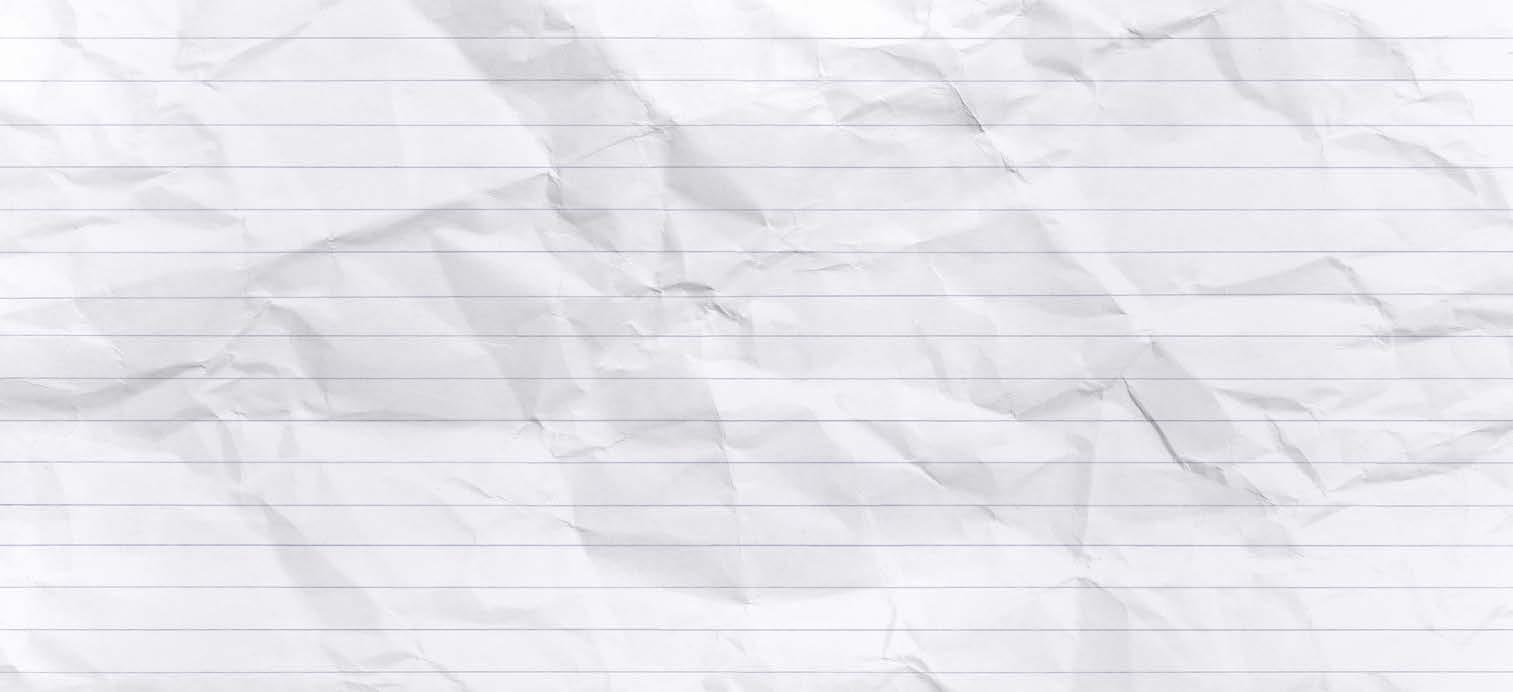
“I intend to spend the money that was given to me for some reason by the

USU. I really don’t know why they did that… It should be much, much harder to become a candidate for the USU Board elections. I mean, frankly, year after year all we see are these silly joke candidates coming in, and, you know, these ridiculous policies, which, you know, to be fair are quite funny. “I’m not interested, and I’m just a big green guy who wants your vote.”
When asked about the benefits of the USU for students, Moore said “I wasn’t aware that it brought any benefits to students. I’ve personally not been on the receiving end of any benefit.”
At the end of his interview, Moore purposely disrupted another candidate’s interview. Throughout the organisational process, Moore repeatedly attempted to make friends with other candidates, to little avail.
Honi supposes he needs someone to like him.

Slogan: #Whiskey4Wildlife

Colour: Orange

Quiz score: Unfortunately, our cat translator was unavailable, so Whiskey was unable to complete the quiz.

Faction: pure, no stupol allowed <3 <3






Meow. I’m Whiskey. A cat. Everyone wanders, petting me. They try to find me. Sometimes I like the pats. Sometimes the plants are more fun. I am happy to sit in sun.
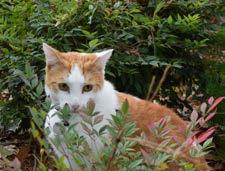


Student experience sucks atm. BIRD. Too much money goes to live, not enough to relax, to sit, to think, to
love. Pondering in sun. BIRD. meow. Living in sun. Oh, to love… Sometimes i wish i could talk. If a cat meows on Abercrombie alone, does it make a sound?
These candidates were unable to complete their interview in time for this print edition
Their quiz results and profiles will be uploaded online and included in the next print edition



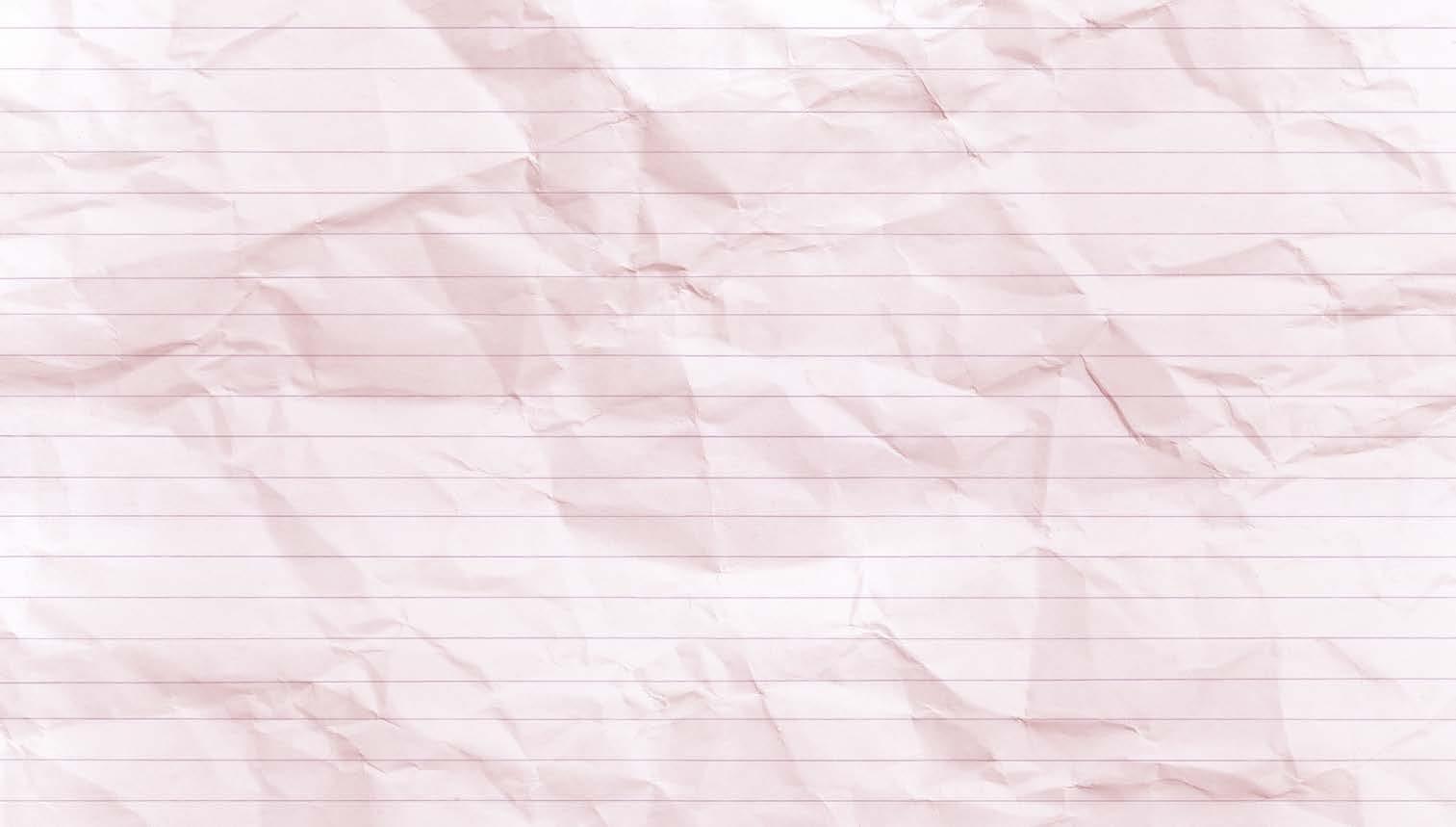
1. Who is the CEO of the USU?
2. Name the past 5 presidents of the USU and their factions
3. Who is the Finance Director of the USU?
4. Who is on the executive of the USU Board and what are their roles?
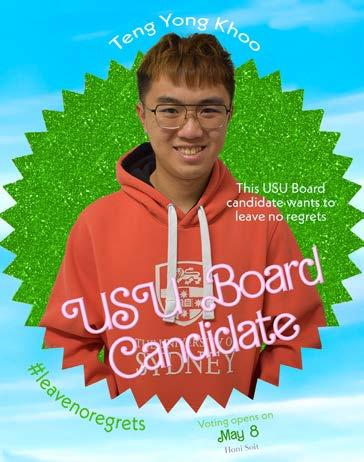

5. Who was the previous Honorary Secretary of the USU?
6. Name two non-student USU staff members and their roles (excluding the CEO)
7. What was the previous name of PULP?
8. Name the directors of this year’s Queer Revue, Womens Revue, and POC Revue

9. What was the USU’s operating surplus in 2021?
10. Name three USU faculty society publications
11. Who is the current director of debates?
12. name the current NUS President and their faction
13. Name the current SRC Women’s officers

14. Define VSU
15. Name three members of the USyd NTEU Branch Committee






16. Who is the Provost of the University of Sydney?
17. What are EFRs?
18. Why aren’t the NTEU going further with strike action?
19. What are the NTEU’s demands for Indigenous employment parity?
20. Who are the state and federal education ministers?
21. To the nearest $10, what is the maximum amount a student over the age of 18 living away from home would receive in Youth Allowance?
22. how much is minimum wage?
23. How much does a regular latte cost at Fisher Coffee Cart?
24. How much is HECS/HELP being indexed this year?
25. What is the question that will appear on the Indigenous Voice to Parliament Referendum at the end of the year?
The issue of Education Focussed Roles (EFRs) was a key reason for the members of the National Tertiary Education Union (NTEU) taking strike action in Weeks Six and Seven of Semester, and remains an unresolved point in enterprise negotiations between University management and the NTEU. So what are EFRs and why are staff concerned about them?
EFRs are academic positions where teaching makes up a greater proportion of an academic’s workload than in traditional “40:40:20” roles. In a 40:40:20 position — the traditional model of academic work — an academic’s workload is made up of 40% teaching, 40% research, and 20% administration. In an education focussed role, teaching can make up to 80% of an academic workload, which comes at the expense of time to conduct research.
Management at the University of Sydney are proposing a dramatic expansion of these EFRs. Under their current proposal, management would be able to employ up to 25% of the non-casual academic workforce in EFR positions. The previous cap, which expired in 2021, meant that the University could only employ up to 120 staff in EFRs. This means that under the current proposal, management could employ up to 650 EFRs, a 440% increase. Just ten years ago, there were no EFR staff employed at the University at all. The NTEU is seeking that EFRs be capped at 20% of the non-casual academic workforce, already having conceded to a large expansion of EFRs.
So, why are staff opposed to EFRs and why does the University want them?
Currently, EFRs have workloads of (in theory, at least) 70% teaching, which can be increased to 80% by agreement. The University is proposing in the new agreement that an “absolute maximum” teaching load of 70% be imposed, with a reduction of that amount to 60% for two years for staff in level A (Associate Lecturer) and level B (Lecturer) positions. This also applies to staff in level C (Senior Lecturer) positions who have not been previously employed in an academic position. Under this model, staff in EFRs would be allocated 20% of their time to research, and 10% for “engagement, service and administration.” The NTEU is seeking that a uniform cap of 60% be applied, across the life of the three-year enterprise agreement.
With overwork already a key issue in the bargaining process, increased EFRs pose a threat of increasing these concerns. Mike Beggs and Beck Pearse explained in an article in Overland, that “the teaching-intensive academic finds themselves without evenings, without weekends, and still feeling like they are cutting corners, teaching beyond their expertise, putting together last-minute slides week after week, staying awake through the mind-numbing task of marking hundreds of essays, throwing their lives into the job and then still dreading their students’ evaluations at the end of each semester.”
Throughout the bargaining process, staff have explained that they are chronically overworked. Much of this overwork stems from the differences between the University’s estimate for how long work should take compared with the time actually taken. In particular, USyd does not give academics enough time to mark students’ work, with casual academic Riki Scanlan recently tweeting that it
tutorial preparation time.
The University of Sydney admitted in 2021 to stealing $12.75 million in staff wages, something which members of the USyd Casuals Network describe as the “tip of the iceberg”. Australian universities have stolen more than $100 million from staff since 2020, according to the NTEU, much of this is based on time-calculations of unpaid teaching work.

Accordingly, it is likely that academics in EFRs will have to do much more work than they are allocated to do, meaning that they will be overworked and prone to suffering burnout. This places doubt on the University’s claim that EFRs can deliver teaching excellence in the long-term.
In an all-staff email, entitled “Why we need EFRs”, Provost Annamarie Jagose argued that the University needs more EFRs because, as specialist teachers, EFRs are best able to deliver students quality education.
This is something that academics and the NTEU contest. In a message shared to Twitter, former Deputy ViceChancellor Derrick Armstrong — who was responsible for introducing EFRs at USyd — said that EFRs “have become … a teaching workforce through which the University can reduce its costs by extractive labour”. EFRs allow universities to hire fewer academics to meet their teaching needs. As Beggs and Pearse explained, EFRs allow management to hire one academic to complete the workload that would have otherwise been completed by two. As an institution, USyd admits that it is heavily reliant on international students to generate revenue, USyd is using EFRs to shoulder the burden of this unsustainable business model. The University’s commitment to fill 220 of its promised new 330 ongoing
whether EFRs themselves are stronger teachers than 40:40:20 academics is flawed. In her email, Jagose argued that the imperative for introducing EFRs is due to USyd’s low scores on its teaching efficacy. She acknowledged that as part of this, “students tell us that they struggle to transition to study at USyd. Even before COVID-19, they reported a poor sense of belonging, a key indicator of future success and satisfaction.” But introducing EFRs seems to in no way solve these problems, which are borne of the exclusionary, and corporate way, the University presents to all students — particularly those from disadvantaged backgrounds.
At the core of this argument is the assumption that EFRs are better teachers because they spend more time on teaching, and on teachingspecific training. However, it should be noted that this extra time comes at the expense of research; university is not high-school. A key aspect of the educational experience is the fact that academics are both academics and researchers, and up to date with the latest research, often producing it themselves. Academics’ ability to do research allows them to tailor courses to their new research, answer students’ questions in more depth, and suggest new directions and methodologies for students’ own work, among many other benefits. The trade-off management makes with EFRs means students will be denied regular access to this expertise. This is not to say that many staff in EFRs are not, or could not be, excellent teachers — it is just that many EFRs would be better teachers if not forced away from research.
The final key issue between management and the NTEU regarding EFRs is the ability for education focussed academics to transition into
and teachers, they were only offered the same position again, with no possibility for advancement. Whilst the staff member argued that there is an opportunity to correctly develop EFRs who have the appropriate support and workload, they said that this was not occurring in faculties like FASS.
academics, particularly those who care about teaching and want to specialise in it, and a clear reflection of the value the Faculty places in them.
“We are seen as second-class citizens.”
The other key problem regarding career progression for EFRs is that
CW: This article contains mentions of hazing and sexual assault in residential colleges.
St. Paul’s, arguably the second most controversial residential College at USyd behind St. Andrews, became co-ed this year. This development has been used to propagandise through the media about a culture shift, including what is essentially a puff piece published by the Herald titled “From a ‘bone room’ to yoga: St Paul’s College journey on consent.” This is much needed for the College’s reputation, as even the most infamous defender of the College system, former Vice Chancellor Michael Spence, claimed in 2017 that the “deep contempt for women” at St. Paul’s was a “profound issue in the life of the College, going to its very licence to operate.”
The Herald’s article repeats a claim that has become significant in the recent arguments of all USyd Colleges — that there was an alleged culture shift in the Colleges in 2017 to 2018 as a result of the Broderick Review, and sexual violence and harassment are now a significantly lessened issue. It repeats the boorish claim that St Paul’s went co-ed to promote diversity; to this claim we should note that before it began accepting women, it was one of only three university halls in the entire country that only accepted male occupants. Furthermore, the St Paul’s College Union (which is hilariously a thing that exists) were strongly against going co-ed, indicating a clear resistance to this diversity. On the other hand, 58% of undergraduate students in the country are women. It is evident that the decision was influenced by financial incentives, if there was any consideration of “diversity” at all.

The rest of the Herald’s article doesn’t have any numbers, demonstrating that this propaganda campaign is all rhetorical and that there is no hard evidence that demonstrates the Colleges have changed at all. That they themselves believe that endemic sexual violence is a PR problem to be managed, rather than an abomination to be eliminated in its entirety, shows that these issues are institutionalised and deeply embedded in the Colleges. If we can’t refer to new numbers, then, we must refer to old numbers, namely The Red Zone Report by Nina Funnell and End Rape on Campus. Some of its findings include:
• Male students at St Andrew’s masturbating into female students’ shampoo, conditioner and/or body wash so that women wash themselves with semen

• “Fresher grooming” practices wherein senior College men rank female College students by their appearances and solicit them sexually
• “Fresher” students being locked in St John’s bathrooms and having “vats of dead fish” thrown on them
The Report also found evidence that a number of hazing practices had been in place for many decades. This further proves the absurdity of the groundless notion that such practices, which exist within a larger culture, have simply gone away since 2018. An Australian Human Rights Commission Report referenced in the Red Zone Report revealed that “[f]emale students at USyd are 66% more likely to experience rape and sexual assault on campus, compared to the national average for female students.” And
they are significantly less able to perform research. In academia, career progression is contingent on research quality and volume — both when seeking internal promotion and external appointment. By making it significantly harder for EFRs to do research, these academics will likely fall behind their peers and be less able
This leads to concerns among academics that — in a workplace where tenured Professors already earn well over a hundred thousand dollars more than most junior academics — the mass expansion of EFRs will lead to a stratification of academic life. Balanced academics will have better positions, a stronger reputation, and greater access to knowledge of the state of research, and long-term EFRs will be burdened by a stalling career and overwork. This is harmful to faculties as a whole: collegial work environments are not only good for staff well-being, but allow the collaboration necessary for the best teaching and research, as work is collectively developed and knowledge is shared.
The planned proliferation of EFRs at USyd follows the mass expansion of these roles at universities across the country. Though universities will not admit it, this expansion has been driven by a desire to cut costs and continue to corporatise tertiary education. However, staff who enter into these roles suffer from overwork and diminished career prospects. It is profoundly unfair for the university sector to pursue cost-cutting in such a way, particularly when they are not proven to improve educational quality and result in a stratified academy.
Staff at USyd, and indeed at UNSW among others, have been on strike over EFRs because they are harmful to those in the positions and universitiesat-large. Students shouldn’t accept management’s inaccurate claims about them.
Iggy Boyd asks why the colleges still exist.
when students are sexually assaulted at USyd, they very rarely know what to do. The NSSS Report in 2021 revealed that, at USyd, 56.9% of students “know nothing or very little about where to go to make a complaint about sexual assault.”
There is a vision for something better than this. According to the Red Zone Report, in 2018 approximately 1700 USyd students lived at one of the six residential Colleges attached to the University. If these rooms were affordable and safe housing, just one College could significantly help to alleviate student housing insecurity. Governments and developers shouldn’t be allowed to label housing as affordable unless it truly is; the Colleges must become actually affordable housing. This affordable housing must also be protected from future privatisation. The Colleges have exorbitant costs which are unaffordable for all but the most privileged students. USyd’s own student accommodation is indexed to 25% below market rate, but the market rate is currently inflated by a huge influx of international students and very little high-density housing in
Residential Colleges don’t allow for student input as they are overseen by forces entirely independent of the University. These forces are often churches, which enforce a top-down culture which makes conservatism functionally mandatory as students are much less likely to speak out when they live amongst the very real threat of violence and bigotry perpetrated by their peers. They have no quotas for Indigenous residents, instead fostering a culture of racism. Just this year, St. Andrew’s students were accused of “acts of intimidation, misogyny and homophobia” towards female College students.
There is nothing here that doesn’t stink, nothing here that couldn’t be improved by tearing away the Colleges from their beneficiaries and giving that land, that housing to the community. It may seem impossible, but the standards of possibility in a political environment is dictated by what our leaders are willing to say is possible. We can no longer accept passivity and inaction from elected representatives and university management: the time for real and sweeping
B-format, small format? Whatever you call them, they’re as good as a doormat! These eyesores line the shelves of bookstores across the country, filling aisles with their garish covers and gross feeling jackets. How these get past the drafting stage is beyond me, and often betray the quality of the books themselves. They say “don’t judge a book by its cover,” but in these instances, it can’t be ignored.
B-format books refer to the re-release of a recently published book. When a book is initially published, it is labelled an A-format or trade version, and comes at a heftier price than normal. A tall-spined title at $32.99, these copies tend to be discarded after six months to a year, when it is replaced to make space on shelves for a cheaper, B-format equivalent.
horrors of an endless forest with death lurking around any and every corner. It puts you in the perspective of its paranoid protagonist.
The small format version, however, does away with these dark, moody colours in favour of a bright poppy pink. It also features a silhouetted figure standing at the precipice of a lake, expanding outwards into the face of a woman, who we can assume is maybe the protagonist. The lake does play a significance in the novel, but the way it is rendered with her eyes and mouth bleeding in does not resonate with the story bound within its pages. A confusing message is therefore sent to potential readers, who may be accordingly hesitant to pick it up.
once exuded a more sophisticated and academic quality, now gives off the same vibes as a cheap, trashy romance novel that would blow up on TikTok and spill off the shelves at Big W.
The worst example that comes to mind, however, is Sheila Heti’s Pure Colour. What once featured a strange, green amorphous oval on the cover, now has a slapped on generic photo of a wilting flower, a betrayal of the novel it is supposed to be advertising. Beyond pure representation of the general vibe of the book, Pure Colour’s original cover was also striking in its simplicity. You were drawn in, like a target, by its emerald void. The little touch of it being askew and covering the title just ever so slightly, set it apart as something truly delightful.

Love and Virtue is an odd case, however, where the book was extremely popular in its large format version. The change in colour palette seems strange, given the title was already so successful. It is worth mentioning, however, that this was the second book Ultimo Press ever published, so they may have not only not expected it to be such a hit; further, publishing companies are admittedly entitled to their own reasons for rejacketing.
Besides these typical changes, some publishers choose to swap out what might have been an already good quality cover or paper material. These are rarely for the better, and can range from the small and minute, to the confusing, baffling, and strange.
Ottessa Moshfegh’s Death in Her Hands, for instance, is about an elderly woman discovering a note in the forest, and believing herself to be at the centre of an insidious, murder mystery plot. Fittingly, it bore an eerie and haunting large format cover. Darkened woods tinted a ghostly blue, with jagged tree branches, evokes the

Emily H. Danforth’s Plain Bad Heroines similarly trades out the dark and mysterious blood red and black cover of its original, for a polychromatic rainbow of shining yellows and pinks. This collection of garish colour choices does not fit with the dark academia vibe of the novel, and would stand right out among someone’s collection of tomes (not for the right reasons).

Some are less radical a change, yet brew deep discomfort for a bookseller like me, who has to stare at these covers everyday. Diana Reid’s Love and Virtue, originally published with a rich swampy green cover, was re-released with a gaudy pink cover. Further, the textural experience transformed with their changing paper stock, replacing a nice rough material with a cheap, plastic-y feeling one. The book, which

I’ve spent many nights scrolling through apps on my phone. TikTok, exploring pages on Instagram, and occasionally lesser-used apps like Goodreads. But what I find to be the most exhilarating at one in the morning, on a hardly exceptional Tuesday, is Pinterest. The miraculous visual discovery engine has given me too many aesthetic ideas in the past few years. A yellow-painted bedroom wall, a complete reorganisation of my desk space, and an odd fashion tip here and there.
On a particularly unordinary Tuesday morning about a year or so ago, scrolling through Pinterest for outfit ideas seemed to be the bane of my existence. Reinventing myself
was part of the University experience, but until that point, the only thing I had changed was the length of my hair and the odd mix of electives unrelated to my disciplines. What I was looking for was revival. A comeback so jawdropping and unmatched that no one would have any idea what I was actually coming back from.
Determined to get to the bottom of this, I reached out to my friend Emma*, who works at a large publishing company to do some inquiring on my behalf. According to her coworkers, “the general response for the rejacket of the B-format is that it’s usually changed drastically if the book did not sell as much as they wanted it to and so they’re rebranding and hoping to appeal to a different or broader market.”
“In terms of the paper quality, it’s generally different because the book is going to be sold at a cheaper price than the trade. That is what we guessed anyway!” It should be noted this is largely an educated guess made among those at the publishing company, rather than a definitive explanation.
This would make sense, though. A cover such as Heti’s Pure Colour, while unique and beautiful, may have failed to reach a broader audience who might be frightened off by a more abstract image. The same, unfortunately, goes
I do also wonder if this “broader audience appeal” is a chicken-egg scenario: does the average consumer actually prefer the worse cover, or are they only buying it because that is all they get? Should we give the average audience more credit?
I will also concede that this is all just my opinion, and there are no objective measurements for a good or bad book cover. Some of the ones I complained about, others may love. However, I am still left perplexed when a book cover so beautiful is tossed aside for very little reason at all. At the end of the day, it will always come back to the same axiom: why fix it, if it ain’t broke?
*Names have been changed.
In the bottom quarter of a very stylish photo of a very stylish gentleman with a very stylish outfit was the heeled boot. And when I say heeled, I’m talking off-the-ground heeled. It was unlike anything I had ever seen before. And I’m assuming, it was unlike anything anyone else had seen before. This was exactly the problem that lurked over my conscience.
The clock continued to tick and chime and do whatever else it usually does, but my mind was racing, and my heart found itself in the proverbial “right place”. I scavenged through every website I could think of, every fashion page I followed, and every blog I kept up with, desperate to find something akin to the Pinterest post. And alas, there it was. A pair of glamorous 5cm black heeled boots,
unlike anything I had ever seen. So pointy they could deflate a baboon’s bottom or stab a magpie’s eye out. So glossy that it could reflect the sun’s beams in a cool, superhero fashion. And to top it all off, a subtle, but sexy, black lightning bolt nodding to the, well, sexiness of the heel itself.
Despite social taboos and the scent of fragile masculinity lingering from my residence all the way to City Road, I hit purchase and a week or two later, sexiness became my middle name. Winter was coming, nay, it had arrived, and you could hear me from a mile away, clippity-clopping my way up and down the steps of the Social Sciences Building feeling like I was on top of the world.
So, this is what my ancestors must
They say “don’t judge a book by its cover,” but in these instances, it can’t be ignored.
I am still left perplexed when a book cover so beautiful is tossed aside for very little reason at all.Harry Gay wants us to stop changing book covers.
And alas, there it was. A pair of glamorous 5cm black heeled boots, unlike anything I had ever seen.Danny Yazdani parades down the ramp.
In a recent Sydney Morning Herald story, Tim Biggs teaches readers all the tips and tricks to get books for cheap. Writing in the wake of e-retailer Book Depository’s closure, Biggs compares the prices of titles between Australia’s dominant online booksellers: the outgoing Book Depository, Amazon (Book Depository’s parent company), and Booktopia. Biggs cites a brand-new bestseller that, on Amazon and Booktopia, is advertised for almost half of its recommended retail price — he urges readers to go for it. He goes through the usual shipping loopholes, plugs Amazon Prime, and concludes his discussion of “competition” with no reference to any bookseller beyond the above online behemoths.
What Bigg’s article fails to realise is that when these online retailers so markedly discount books, they obliterate the chance for independent bookstores to survive. Biggs is by no means the sole culprit — the internet abounds with step-by-step guides to bookshopping “hacks” — but that being said, he brings fare that belongs on finder.com.au into a national masthead. To provide publicity for Amazon, a half-trillion-dollar conglomerate that has consistently disregarded human and worker rights since its inception, is to erase the damage that online mass-market booksellers bear on the Australian retail landscape.
According to a statement by BookPeople, the leading Australian booksellers’ association, Amazon has become Australia’s dominant retailer for the sale of books. Their position in the market allows them to offer such a deep discount on titles, particularly on the bestsellers that appeal most broadly to the Australian market. Books, for Amazon, are loss leaders: their revenue lies substantially in Amazon Web Services, and their business model is increasingly dependent on cloud infrastructure. Due to their capital,
have felt like. This is what it meant to march into the battle and return victorious. Now a fierce symbol of femininity — strutted on runways and sensationalised — the humble-heeled shoe once strictly belonged to the realm of the masculine.

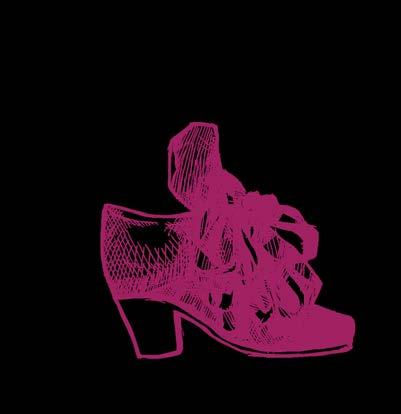
The heel emerged on the brink of the tenth-century. The Persian cavalry who, when riding horses, wanted to keep their feet sturdier in their stirrups. Their use of heeled shoes captured the aesthetic interests of the general public, and by the seventeenth century, heels became a symbol of power and status for those who wore them. With the departure of Persian diplomats to imperial courts in Europe, the craze for the Persianate world flourished.
The modern heel has continued
Amazon is then able to tilt Australia’s labour, tax and import laws in their favour — their success is contingent on their aggressive, legally contentious business strategies.
All of this is to the detriment of your local bookshop. In the wake of a pandemic that temporarily shut down brick-and-mortar retail, and amidst the rental, wage, and cost of living crisis that we face today, independent bookstores cannot compete with a corporation that discounts their fundamental product. Further, Amazon owns two of the other most damaging forces to independent bookstores, Kindle and Audible — if, in their shadow, bookstores cannot turn over a profit, what is their future?
I want to quote briefly from the author Charlotte Wood, and argue that “bookshops are the safety vaults for the seeds of our country’s cultural and intellectual life.”

When independent bookstores are allowed to flourish, they can provide considered, personalised service to their customer base — the very same bookseller gave me Le Guin’s Earthsea at the age of ten, Salinger’s Franny and Zooey at the age of sixteen, and Orwell’s Down and Out in Paris and London just last week. Through physical bookstores, a love of reading is promoted: educational events are held, local authors represented, and a literary culture blossoms. In a broader sense, independent booksellers allow for retail variety:
to be prevalent in modern life. The Cuban heel is significant in traditional flamenco dance. The heel became a key part of decade-defining looks in the
they cultivate a “bibliodiverse” landscape that discourages market hegemony, and encourages customer choice. Further, since bookstores tend not to depend on aggressive digital advertising, they can encourage the sale of culturally significant books, and titles that promote independent ideas and thought, over mass-market bestsellers. When they disseminate books from smaller publishers, bookstores encourage the discovery of unknown authors, whose works would otherwise be relegated to the depths of Amazon’s web pages. It is for this reason that the loss of Balmain’s Feminist Bookshop, Surry Hills’ Architect’s Bookshop and Published Art, and Beecroft’s Children’s Bookshop, is so devastating — bookshops that are curated, intimate and thoughtful are a net positive for local communities.
What, then, is the solution? I think we need to turn to France, where books are (rightfully) seen as cultural assets. Following the 1981 enactment of the Loi relative au prix du livre — more commonly known as the Lang Law, after the socialist Minister of Culture responsible for its creation — France has successfully protected small, traditional booksellers from chain retailers and mammoth Amazon-esque forces. The original premise of the regulation is that when a publisher decides on a book’s price, they are obliged to print it on the back: crucially, retailers are not permitted to sell the book for a discount of more than five per cent below this RRP. This “fixed book price” system, or FBP, preserves brickand-mortar bookselling: France boasts over 3,500 independent bookstores, a number that continues to rise, while over the last decade, the number of bookstores in Australia has dropped
adaptations in other empires lives on, and are celebrated, in different forms today. Whilst not always the case, these examples of heels portray men in a way we don’t often see.
There is also an entire community of gender nonconforming people and drag artists who also use the heel in a subversion of gender norms.
by 65.5% (to 1,475 sites, inclusive of chain stores à la Dymocks and QBD). In recent years, France has extended the Lang Law to cover e-books and audiobooks, and even to curb Amazon’s free delivery deals. Similar laws exist across the world, notably in Germany’s Buchpreisbindung and Japan’s Resale Price Maintenance System, and serve to encourage balance, fair competition, and a flourishing culture of independent bookstores. When Amazon does not wield all control, the market is far better off.
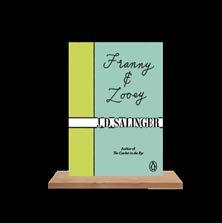
more and more I reflect on the heel — such a powerful piece of plastic, suede, and/or leather — the more and more I associate it with power.
The power of Persian nobility and its
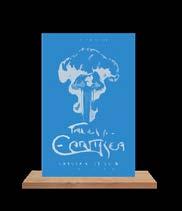
Although a pair of shoes aren’t the only thing that energise such great feelings of power and self-esteem, they sure are a leg up. They can act as a very literal symbol of overcoming a contaminated and restrictive approach towards
Australia does not regulate book prices — neither, for that matter, does the U.S. or the U.K. — but we should. Prior to 1972, we did employ a fixed book price system: a growing desire for unimpeded free-market capitalism led to the law’s repeal. However, in our current climate, the need for fixed book prices in Australia has never been higher.
When we speak about saving bookshops, we are not talking about capital: we are speaking about ideas, politics, and culture, and to preserve this, books should not be commodities subject to competition-based pricing. Given Amazon’s control over the Australian bookselling landscape, their exploitation of human rights, and the sheer excess of their book discounting, it is unconscionable to keep supporting their practices. Legislation must be drafted to halt Amazon’s offensive, regulators need to step in, and in the meantime, let’s stop giving them our money.
masculinity, even though they are frequently only associated with
If you hear footsteps approaching you on campus, know that it’s me. Rain, hail, or shine, those heeled boots will make an appearance, unless I don’t have anything dapper enough to match them with, but that’s another story.
Art by Margot RobertsIndependent bookstores cannot compete with a corporation that discounts their fundamental product.
Legislation must be drafted to halt Amazon’s offensive, regulators need to step in, and in the meantime, let’s stop giving them our money.Eamonn Murphy wants us to actually value books.
Barbi Ghanoush is the alter ego of a self-proclaimed “staunch dyke” and theatre kid. Featured on the cover of the Mardi Gras edition of Honi Soit, her drag is big, stunning, and provocative (if you want to see its effect, read the Catholic Society’s review).
The Auckland stop of UK transphobe Posie Parker was met with a strong counter protest where protesters sprayed the speaker with tomato soup. Barbi went viral for parodying the speech dressed in what she called “Posie Parker drag” — a large, neatly coiffed blonde wig with a bejewelled shirt that read “ADULT HUMAN DRAG QUEEN” — and had viewers spray her with ketchup.
I sat down with Barbi to chat about drag, politics, and the night when she went viral.
[The following conversation has been edited for clarity.]
Why did you decide to do drag?
My introduction to drag actually happened when I was really quite young. The first time I saw drag was at my grandfather’s 75th birthday, so I’m incredibly blessed to have had a grandfather who came out as openly gay in the eighties. He’s an incredible man. There’s a bit of sadness to that story, because unfortunately he did pass away before I had the opportunity to come out to him.

We’re in the local community hall, and my grandfather’s the campest man alive. His birthday theme was getting his closest friends and family to stage individual performances for him.
It was forties themed, so we all dressed up and did a little boogie woogie bugle boy number, my mum and all my aunts did a little flapper dance. And then, into the middle of the hall, comes the most beautiful creature I’d ever seen in my life.
She was tall and straight out of the forties; glamour, the beautiful hair, the sequins — everything— and she performs this insanely glamorous number where she’s just kind of crooning, and there’s feathers and there’s a fan at some point.
I didn’t know what the fuck drag was. And it literally wasn’t until my parents recounted this story later and said that halfway through this performance, my younger brother had gone “Mom, I don’t think that’s a girl, cause she has hairy legs.” And my mum said, “Well, that’s because it’s a drag queen.” And I just went, oh, what? This is a thing.
So I guess drag has been in my blood ever since I was a little kid. Barbi
herself only came to life…it will be one year ago on the 6th of May this year. I’m 11 months old.
It does sound like performance was a big part of your childhood. Was your upbringing surrounded in doing performances for your loved ones, doing dance classes, things like that?
I was gonna say don’t tell anyone, but this is literally an interview. I was a theatre kid in high school. I was in all of those stupid, bloody community pantomimes and I did drama and basically whatever I could do to get eyes on me. But drag itself, as a form of my personal expression, is just the latest iteration.
Why be a drag queen as opposed to being a drag king? Was it this idea of glamour?
Drag kings intimidate me. They’re so good at what they do. I dunno. Being a queen felt like a very natural path for me. In terms of when I’m out of drag, what my gender is…hmm, that’s a big question mark. I don’t really know her, but as anyone who had the experience of being assigned a woman as a child and the socialisation that you go through for a long time, I really, as a part of my gender identity and as a part of my queer identity as well, rejected a lot of traditional femininity.
I thought, all those ridiculous entry many, many years.
So I’ve found that Barbi is a really fun way for me to explore these aspects, to explore makeup artistry, and being a big bimbo, and the colour pink, and
calling myself Barbi for God’s sake. It’s a really fun outlet for me to just fuck around with gender and fuck around with womanhood.
Also, before we move on, I wanna clarify. It’s definitely because I’m not good enough at painting to be a drag king.
You are quite politically and socially involved, so how would you see your drag identity interacting with your activism?
For me there are a lot of places where the person, me as Jasmine, and the character Barbi separate, like there is a clear distinct difference between me when I’m in human mode and the character of Miss Barbi.
But one thing that I don’t like to compromise on is my politics. So whatever my politics are as a human person, that’s what the politics of Barbi also are. So for me, you know, like I mentioned a big gender question mark, but staunchly, staunchly queer and a staunch dyke. As a unionist, as a Lebanese person, as a, you know, child of immigrants living on stolen Aboriginal land, I’m not gonna separate out between the person and the character.
So a lot of that does come up in things I’m talking about, but it can also pop up in performances, which is something I’ve always admired in performers that I’ve watched.
So how did the Posie Parker performance come about as an extension of activism and your community as a queer person?
Quite honestly, it’s been really hard to avoid news about Posie Parker. Particularly for queer people, it’s very present, it’s very much on the mind. It does pose a really serious threat to our lives and to our safety. But the way that the performance unfurled was very much just a few different pieces falling into
I, for quite a while, had been thinking that someone should do an imitation of Parker in drag because she is like… whatever she’s doing is just drag, right? The the power suits, everything about it is for parody.
And then that very night I got a message from the gorgeous drag artist, Baby Doll, who runs the night with Michelle Mayhem pop at Ching-aLings where I ended up performing this, she messaged me and said, “Hey, we’ve got a slot open on Thursday, do
you wanna come and perform?” And I just went, well, this is perfect. Ran to Kmart to get some rhinestones and a pink turtleneck and the rest is history!
What were then the next steps of going viral?
It was genuinely, completely unexpected. I think the best moment of the whole fiasco…I was best summed up by a comment from a terf under the video that said “she probably performed this in front of a room of four weirdos.” And I read that and I was like, well, kind of.
It’s really hard to get crowds on Oxford Street right now, cost of living and everything, so I was like, this is gonna be such a funny, like, thing for me to do at my favourite bar with my friends watching full stop. That’s the end of it, but one of them recorded it.
The next thing I know, a journalist in New Zealand picked it up, and then Posie Parker herself has retweeted it, with the caption “Misogyny can be such a drag.” Like I had a little giggle, I’m not gonna lie to you. She clearly worked quite hard on that one for quite some time.
I’ve never had an experience like that before, virality to whatever degree, I suppose. The amount of commentary, the amount of contact I was getting from total strangers was incredible, especially when it got into like fashy, transphobic circles. I will say that, emotionally, I managed to remain relatively unaffected just because not one of these dumb, dumb dummies could figure out what the fuck my gender was.
I cannot count the number of times I’ve now been accused of woman-face; the man in the dress allegation will never be defeated apparently. So there was a nice level of distance in a sense.
It was very intense, but that’s why we have the mute, and block, and notifications off buttons.
Has much changed about what you’re doing now or how you’re managing your platforms in light of that?
I mean, modern day drag characters always come with social media on the side. There’s definitely been quite a rapid change in the way that that’s handled, just in terms of ensuring that your identity is safeguarded.
You know, making sure that people who might be pissed off at my drag, don’t let that get in the way with work or anything like that ‘cause I also work full-time. So that was a bit of a rude awakening, but it’s always good to double check your internet security, right?
In terms of drag itself, the only thing it’s really made me do is become even more determined to piss people off.
i’m in love with at least three people at all times

this is how i know
as someone identifying on the aroace spectrum
i’m a hopeless romantic through and through
i approach every new friendship like a sapphic on a first date tell me everything about you i whisper internally, loudly
give me everything you’ve got, i’ll take what i can get
i want to hear your story and be a part of it
— without you without them
we sit waiting for our friend to get off work, our laughter bouncing off the walls
we joke about our issues as if we’ve been friends for years
three hours feel like nothing with her
i feel safe when we hug and we laugh at my shivering
from my anxiety or the weather i’m unsure
being in her presence feels like unmasking
i can talk to her about anything and everything the exactness with which we relate to each other surprises us both
i don’t think i expected to have so much love for her
i laugh into their chests when they both pull me into a group hug
i am not yet comfortable with physical touch but
when they let me go i crave being unable to breathe in the tightness of their embrace
i kiss them both on the cheek goodbye and on the way home i spend all my energy committing every moment to memory
i love my boys.
it feels good to be known so well
i can’t hide from you like i hide from myself
i remember who i am when i’m with you
— true blue
after a night out with my friends, telling them about my tantrum stories
i recount the conversation in an audio to one of my closest friends and she makes a reference to my most
embarrassing one i had not revealed
i spit my water out in a coughing fit
she sends a fifteen second audio of just her laughing and remembers such a silly piece of my history and i think what the fuck you know too much about me
my laughter is strained from a mixture of shock and a feeling of wholeness
i’ll give everything i’ve got, please take what i can give i want you to hear my story and be a part of it who would i be without you
— without you without them
i tell my friends over facetime
“you’ve changed me fundamentally as a person”
i am who i am because of you love is real life is worth living
my cheeks are wet and their faces leave the frame for a second before they tell me
to shut up
i am thankful for the distance as we share glances across a screen unable to control our tears and laughter
when my mother speaks of concerns of me finding love in life
i stifle my desire to scream — i’ve found love!
it is an overflowing stream my heart can’t contain
i feel crazy in ways i never say will you still love me if it turns out i’m insane?
- we’re in love
i sometimes sit in my closet to feel. the green hedgehog blanket you gave me when you last visited keeps me warm
in here i sit on the forest green quilt you gifted me and thought i would never use

i don’t feel so alone in this space or in my feelings you are here with me please stay.
i hope we always change in ways that fit into each other’s lives

A snappy bass riff resonates through the darkened seats of the Seymour Centre as shadowy figures scurry into position. Light hits the stage and the cast of Queer Revue 2023 burst into a rendition of “Do It All The Time” by I Don’t Know How But They Found Me, the chorus lyrics replaced by the show’s title and a call to action for us in the audience: to “be gay and do crime.” In a matter of seconds, the show is in full swing and the energy is buzzing.
Been Gay, Done Crime is a perfect mixture of absurd and harrowing. Blending comedic and moralistic tones, it pokes fun at the trope of the queercoded villain, the show also embraces the flamboyance of the post Hays Codeera typecast and contributes to a larger reclamation and celebration of the once derogatory stereotype.
Directors Amy Warner, Taylor Fair, and Alyssa Meli ingeniously intertwine smaller comedic and musical sketches around a main storyline that captures hearts, as four villains find companionship, love, and pride within each other.
Marlena Holdernesse considers becoming a villain.
villainy, and towards a certain Dr Xperiment (Zack Alloggia). Bringing the audience along on a journey of selfdiscovery and acceptance.
A particularly touching moment for Captain Might is when, amidst a mashup of Taylor Swift’s “Anti-Hero” and “How Bad Can I Be?” from the Lorax movie soundtrack, he exclaims “fuck binaries of good and bad, now I can see it queerer!”
Margot Roberts — never failed in their comedic timing, least of all during their 30-second skit in which they ran onto the stage just in time to shout “Tequila!” and then returned to their seats upstairs.
Renditions of the Kahoot background music and, on multiple occasions, Daft Punk’s “Robot Rock”, among many others, kept the momentum building steadily throughout the revue.
As the last remaining undefeated superhero, Captain Might (William Darby) juggles his two arch-nemeses, Destroyer and Terminator (Ewan Cooper-Frater and William Winter), as well as his growing attraction towards
Throughout the second act, this defiant energy builds to a climactic celebration of pride and queer joy in the final musical number, a choreographed parody of Miley Cyrus’ “Party in the USA” that had the entire audience clapping along.
Other highlights of the show include the 9-piece band, who — thanks to band directors Evalyn Sharpham and
Been Gay, Done Crime asks a simple question: What if the queer villains emerged triumphant? And the response plays out in a show that is undeniably and contagiously fun.
By this point, you’ve probably heard about the benefits of keeping a journal. From providing a space to clear your mind to being able to track your ideas, journals can be incredibly useful. As an avid writer, I lug my journal everywhere — even to the local grocer barely two blocks away. I’ve learned a thing or two about the practice, and if you know me, you’ll know that I encourage everyone to keep a journal, because there’s value in putting your thoughts on paper.
Journaling isn’t as complicated as it seems. The beauty of the practice is the process — the ability to write whenever and wherever you desire. I’ve found that if you take it too seriously, it will take the magic out of it. If you want to start journaling but don’t know where to start, here are some of my tips for getting started.
Whether you have a fancy new notebook, a spare sheet in your lab notebook, or even the notes app on your phone, this will suffice. Try to find a sense of comfort wherever you are. It doesn’t matter if you are in a quiet, focused environment or on a busy bus listening to the chimes of commuters tapping on and off. Feel yourself sink into your seat. Take a deep breath and turn to your blank page.
Before you can overthink it, write something down
Try to articulate the thoughts in your mind, as you write you will transform these from clouds to words. As people, and students especially, we can often find ourselves in an endless loop of thought. Journaling is about finding a thread that gives you a better perspective on that loop.
Amna wants you to write in your journal (or start one).
A common misconception about journaling is that it requires a completely blank state of mind. When I journal, it’s often actually the opposite. The goal is to log what is inside your brain, unfiltered, exactly as it is. Although this might feel like the hardest step, it’s the most important and it gets easier with practice.
Some days, you’ll have more to write than others. Other days, you might have less. For those times where you don’t feel like looking inward, here are some prompts to get the juices flowing:
• What was the first thing you thought about when you woke up this morning?
• Write a letter to someone you think about a lot? When you’re done, decide whether to store or send it.
• Describe the perfect day.
• If you knew you couldn’t fail, what would you do?
Every human has approximately 39 trillion microbial cells living on and inside us. I learned this as part of a compulsory first-year class, and alongside all the typical challenges of starting university, I was one step closer to an identity crisis. Does knowing I provide a home to 39 trillion organisms fuel a God complex or does it add to my insignificance, knowing that the world is now infinitely bigger than I previously thought? Not only am I only one of billions of humans, but each of those humans has trillions of microbes.
Every human has approximately 30 trillion human cells.

Technically, we are more microbe than human. Luckily, human cells are a lot bigger, so by weight we are still more human than microbe, but I still feel a little outnumbered.
Since learning about my microbiota, I’ve resolved to think of myself as a
house. Or rather an expansive hotel with 39 trillion tenants each living in different rooms in my body and diligently performing tasks to help me survive. Throughout the course, I began to familiarise myself with just a tiny fraction of these tenants, Staphylococcus aureus who live on my skin and are tolerant to the high salty conditions of sweat, Entamoeba gingivalis who inhabit my mouth, Bifidobacterium bifidum who help my gut to break down food, and even Lactobacillus that live in my urinary tract and help prevent UTIs. There really are microbes all the way down!
Most of our human microbiota are acquired at birth or shortly after. This means my microbial tenants (and their ancestors) have been with me all my life. This whole time, they have been helping me function and survive without me being aware of their presence at all.
I learned about how my dutiful microbiota helps shape and train my immune response to different
pathogens. My microbes help to protect against infections by competing with pathogens for resources and space within the body.




However, despite my microbiota’s efforts, some sickness is unavoidable and each time a new traveler arrives at my microbe hotel, the residents have to battle it out.
I thought about my body fighting off these pathogens, and became perplexed by how my body (with the assistance of vaccines) knew what to do without me telling them a thing. Helper T cells quickly activated lymphocytes, producing antibodies to target the specific antigens. Everything works in tandem, while my body languishes in bed binge-watching Netflix.
I wish I could write a thank you card to my immune system for helping me recover; instead, some Immuneboost vitamins will have to do.
• If you were to declutter your brain, what would you release?
• Make a list (about anything you want)
• How was today different from yesterday?
At the end of the day, don’t take it too seriously. You should treat journaling as a physical manifestation of your brain — it is for your eyes only. You don’t need to worry about a potential reader or how you might be perceived by another person. You can express yourself, however you want to. Whether that involves pictures, words, or colours, treat it as a brain dump, in the most literal sense. I’m challenging you to stop reading and put pen to paper. Whether you’re a long time writer or new to journalling, it’s time to write something.
It’s safe to say that this class changed the way I think about the world and myself completely. But perhaps the most shocking fact of all is that, even though for a whole semester we studied hundreds of different microbes, this is only the surface of microbiology. Less than one per cent of microbes can be studied in laboratory conditions, leaving me and my classmates almost entirely unaware of the other 99% of microbes.
I never took another microbiology class, and now that I am in my third year, I doubt I ever will. But evidently, I still think about that class a lot. Every time ride an escalator, blow my nose, or really do anything at all, my microbes are with me and my awareness of them makes me feel some kind of way.

With five minutes left on the clock, I make my way through an unfamiliar building in a forgotten corner of campus, an underlit hallway buzzing with the machinations of expensive and incomprehensible equipment. As I creep along, the damp carpet masking my footsteps, I observe glass cases displaying studies printed in impossibly small font, enormous posters of diagrams of teeny tiny molecules or systems of combustion, or sign-up flyers with two tickets missing. They all have two tickets missing. They teach us to do this in psychology -- two tickets missing from a study sign-up will give a sense of urgency, of rapidly deteriorating opportunity. Don’t trust us, beware the two missing tickets. I reach one of many doors numbered in a dubious sequence, and knock.
stimuli with a stream of minute permutations. The line between really boring and really intense is probably finer than you think. Naturally, I go into every one of these with eyes wide open:, everything is briefed, you can back out whenever you want, or you can choose not to include your data.
SPSS and produce patterns, the loveliest patterns you can imagine, spelling out laws and trends like cosmic melodies. It’s humbling. Even better, you can opt-in to get a copy of the results.



As Semester One of my second year approaches its close, my honours year creeps closer. Soon, I’ll get to design one of these weird little experiments, putting out my net and see if I can

Anyone at the University can volunteer for research participation. I got into it to earn that little 5% boost, but if you want to try out some random cool stuff, and give your little data point, try it out! Who knows, you might learn something about your brilliant, predictable brain.




I come for the purposes of earning a measly one point five per cent of my grade for PSYC1001, with an hour and a half of research participation. No one told me this would be a part of my study load, and although I’m rabidly curious, I don’t know what it will entail. The psychology honours student who answers the door has her hair in a messy bun and looks haggard. There is a pen behind each ear, and she gives me chocolate while she runs me through an explanation of the experiment.
the semester, I experience a wide variety of weird shit. I have my head clamped in place to measure the movement of my pupils. I am strung up with electrodes, and given twenty volts 100 times in a dark room. I put on a VR headset, and shoot moving dots with a laser gun while walking back and forth. Sometimes, all I do is fill in a questionnaire or respond to endless

The psychology honours student who answers the door has her hair in a messy bun and looks haggard.
LIA PERKINS
Hello! Here’s what I’ve been up to.
I was at the Women’s Collective forum about abolishing the colleges and building public affordable housing for students. It was an excellent discussion, and I can’t wait to see where the women’s collective go with their campaign to abolish the unsafe, elitist, misogynist and
ISHBEL DUNSMORE YASMINE JOHNSON
A busy few weeks have once against raced past us! Last Thursday we cohosted a great rally as part of our anti-war campaign with the enviro collective, calling on university management to scrap their dodgy deal with Thales, and commit to fully divesting from fossil fuel criminals
The Women’s Collective had our Public Forum on Thursday and thank you for all who came, including the brilliant speakers. Shoutout to Khanh
racist institutions that plague our campus. On Thursday I also attended the EnviroXEAG rally - no to war, no to fossil fuels as it is important we continue to stand up against damaging militaristic policies like AUKUS.
I met with the President of the Western Sydney Uni SRC, and support their fight to be independent of the University. It is an unfortunate consequence of VSU that Universities exert control over student unions which should be fully funded autonomously of Uni
like Santos. The recent committment by the Albanese government to advancing their imperial march to war with China via the AUKUS deal signals a real need to build a larger opposition to war, both from students and the general public. We had great support from various antiwar groups, both at the rally and online, which indicates that this is not at all a minority position. Join our contingent to the May 6th Port Kembla rally (the proposed building site for Albanese’s nuclear subs) to
Tran, Nina Funnell, Jenny Leong and Chloe Drugas for speaking, there was a great discussion and much to study from what we heard. A warm thanks also to Nadeena Dixon, who performed the Welcome to Country and joined the discussion. We discussed solving the housing crisis through building more housing without allowing public land to be sold off to build those houses,
EDDIE STEPHENSON
KIERA GARLAND
JULIUS WHITFORTH
JORDAN ANDERSON
The Social Justice Officers did not submit a Report this week.
management. I also met with the NUS Ethnocultural Officer Ben, and the SRC Ethnocultural Officer Rand shared some of the work she has done so far, and the importance of the NUS committing to their position about the IHRA definition.
The selection committee for the SRC’s Electoral Officer will release an ad this week, and I encourage you to apply if you meet the selection criteria. We had a meeting about the progress on the disability space, and it is scheduled for completion in August. The results of our 5-day
say NO to war with China, as well as our contingent to the protest against the Quad meeting on the 24th, which will bring together the worst of the worst - Biden, Albanese, Modi and Kishida - to discuss how best to push for a bloody and unnecessary war. Check our FB for details.
Following the Albanese government’s recent decision to index HECS debt to skyrocketing inflation rates (wow, starting to sense a pattern of bad decisions here), your education officers participated in and spoke at
the continued state of violence and secrecy in the Colleges, how we can combat the University’s obsession with its reputation and there were great contributions from the floor on the inaction of the government and how we can campaign further on this.
We’ll be having a rally on Wednesday the 10th of May, which we’ll be providing more details for on
simple extension survey will be released this week. Please keep an eye out to make our message clear that students need support and flexibility in their education. Note: the SRC’s council meeting is on Wednesday 3rd May at 6pm.
Monday 1st is May Day and the SRC is closed, and we have a contingent to the union rally in Belmore Park. There is a May Day action on May 6th at Port Kembla, fighting to keep Port Kembla Nuclear Free.
the NUS rally to freeze student debt, and (once again) demand education be made free. With the cost of living crisis escalating and course cuts ever present, there’s never been a worse time to be a student, and never a better time for free education. Join us in Canberra on the 9th to disrupt budget day and demand more from Albanese!
Come to our next weekly meeting (next wk) to get involved!
our social media very soon. This rally will be in support of safe and actually affordable housing on campus, and against the Colleges and USyd Management’s disgusting lack of action on sexual violence on campus. We hope to see you there, as well as at an upcoming campaign strategy day we’ll be giving more details for soon in our Facebook group.
ALEXANDER POIRIER
LYDIA ELIAS TING HOU WENQING XIAO
The Intercampus Officers did not submit a Report this week.
MAEVE LARKINS
MADDIE CLARK
SIMON UPITIS
SATVIK SHARMA
The Environment Officers did not submit a Report this week.
These pages belong to the Office Bearers of the University of Sydney Students’ Representative Council.
In order to maintain Office Bearers’ autonomy, they are not altered, influenced or otherwise changed by the Editors of Honi Soit.
Youth Allowance and Austudy recipients have a Student Income Bank (SIB), which allows you to work while receiving a Centrelink payment. This can accumulate to $12,000 a year
How much can I work while I’m on Youth Allowance?
Working
Dear Working, Youth Allowance and Austudy recipients have a Student Income Bank (SIB), which allows you to work while receiving a Centrelink payment. Each fortnight you are allowed to earn $480 without
Exams can be a stressful part of studying at Uni, but good preparation can help you manage the stress and do well. Start by checking the date, time, and venue of the exam, and any alarms and notifications you’ve set for these. Missing an exam because you were confused about the time will not get you a replacement exam.

Find out what topics will be covered in your exam, the type of exam and the rules for that particular exam. Do this even if you have attempted the subject before, as things may have changed this semester. If your exam is “open book”, that does not mean that you can access any online resources. It means you can access notes that are printed on paper or on a device that is in “aeroplane” mode (that is, “saved locally”). Using online resources, even if they are your own notes, is a breach of academic honesty rules and may result in your failing the exam.
Your unit of study outline might show you the most important topics, or you could ask your lecturer or tutor where you should focus your study. There might also be previous exam questions in the library, for you to use as practice. Do not use websites that provide practice questions and answers. These almost always count as contract cheating sites and may result in you being suspended from uni for a semester or two. Always check with your tutor about what extra resources you are allowed to use.
If the exam is online, make sure you are familiar with ProctorU, and conduct a test session to ensure that your computer, the space you are working in, and your internet are appropriate for the exam. The proctor needs to be able to see you clearly throughout the whole exam so check that your camera is working and pointed at the right angle. Do not wear a cap or headphones so they can see that you are not getting answers from a third party. Log out of
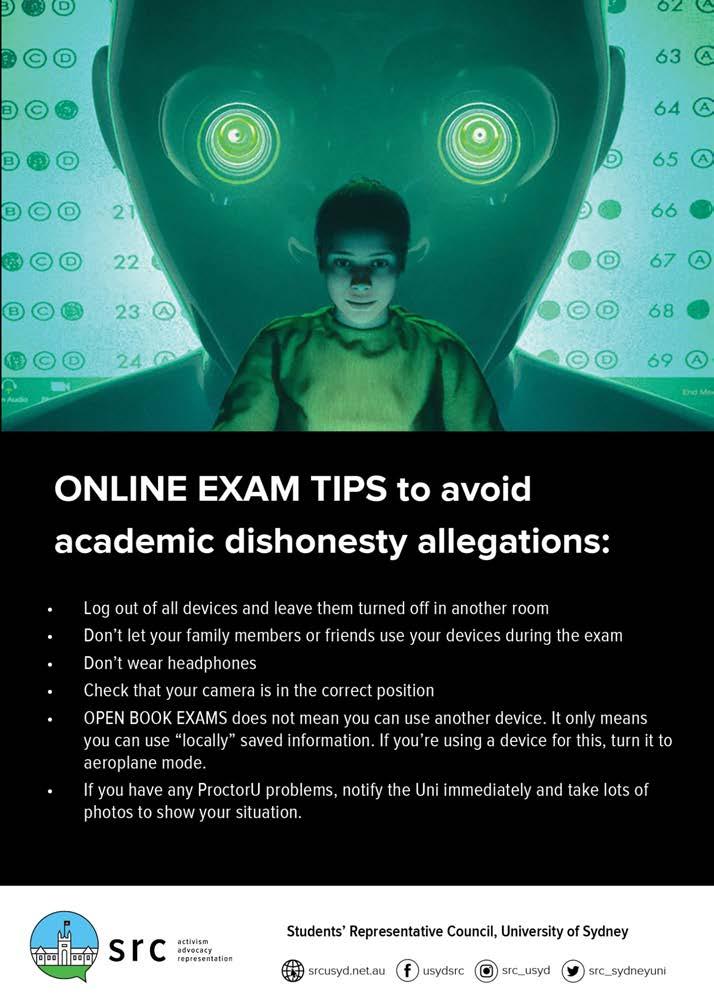
all devices that have Canvas or other relevant online resources, and make sure they are in another room. Do not let other people use those devices during the exam. All those things can lead to an allegation of academic dishonesty and make it very hard to prove that you have not cheated. If your home internet is unreliable or noisy, book a room in the library or ask your subject coordinator if you can do the exam on campus. If you experience technical issues during an online exam, document the problems in every way you can (lots of photos, videos, screenshots) and apply for Special Consideration within three working days of the exam. Double check the names of files you are uploading to ensure you are submitting the current document for your exam. Many exams have ten to fifteen minutes of ‘upload time’. Do not use this time to write more; use this time to ensure your files are saved correctly, and upload them with time to spare.
If you are unwell on the date of the exam, or if your performance is impacted by an illness, injury, or misadventure that was unexpected and beyond your control, you can apply for Special Consideration, even if it is a replacement exam. Special Consideration applications must be submitted within three working days of the exam date, and you must provide appropriate supporting documents. See the SRC’s website for more information about Special Consideration
If you think you have been given an incorrect mark for your exam, you have the right to lodge an appeal. See the SRC’s website for information about appealing a grade

If you have any questions, please do not hesitate to ask a caseworker. We are happy to help.
any reduction to your payment. If you earn less than $480 in that fortnight, the remainder is carried over to the next fortnight. This can accumulate to a maximum of $12,000 a year. If you earn more than your SIB in a fortnight, your Centrelink payment is reduced by 50 cents per dollar for every dollar between $480 and $575, then 60 cents per dollar for every dollar afterwards.
Abe
To find out more: srcusyd.net.au/src-help/caseworker-help/ centrelink/centrelink-your-income
If you need help from an SRC Caseworker start an enquiry on our Caseworker Contact Form: bit.ly/3YxvDUf


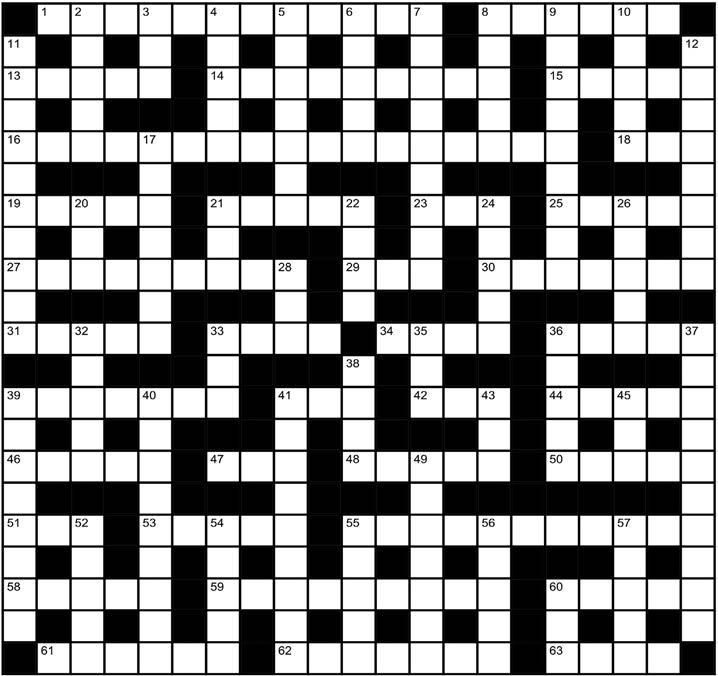
Across
1? Star Wars character said ‘Oh bee I masturbate and dash!” “Oh, bee I” said!’ (3,3,6)
8? Select letter demanded not a Star Wars Character (6)
13. Leader (5)
14. Anakin, Luke, Rey (9)
15. NWA Film and Song “Straight …. Compton” (5)
16. Talking gibberish (8,2,7)
18? Star War character’s sonic beam (3)
19. Chad’s Neighbour (5)
21. Luke Actor “Mark…” (5)
23? Star Wars Character talked to Tellytubby (3)
25. How one might describe the Holiday Special (5)
27. Galaxy that is not far far away (9)
29. Method of Contraception (3)
30. Drake Song “… Bling” (7)
31? Star Wars Character shown on iPad menu (5)
33. Ratzenberger, Williams, Boyega (5)
34. Film in Picture A (Intials) (4)
32/36 See 32 Down
39. Lie (4,3)
41? Star WarsCharacter leads Separatist insurgency organisation (3)
42. Drinking spot (3)
44. Width (5)
46. Chem. compound in alcohol (5)
47. Film in Picture B (Initials) (3)
48. Locations (5)
50. Japanese Assassin (5)

51. Country where the Endor scenes were shot (3)
53. Harrison Ford, Carrie Fisher, Samuel L Jackson For Example (5)
55? Star Wars Character will annoy and upset with rubbish odd kiss (3,3,5)
58. Mario’s brother (5)
59? Star Wars Character’s staff raps
window (5,5)
60. Dryer (5)
61. What Luke and Leia’s kiss is (6)
62. Believed to be guilty (7)
63. The month Star Wars was released in UK (4) Down
2. Protrusion, especially apparent when wearing tight jeans (5)
3. Clone, Galactic Civil, Jedi-Civil (3)


4. Japanese Car Company (5)
5. 2013 Sci Fi film that gets its name from a word meaning state of bliss (7)

6. Art that uses optical illusions (2,3)
7. Pad for inking (6,3)
8. Marcel Proust Book: A La Recherche Du Temps… (5)
9. French breakfast (9)
10. Someone who rates (5)
11. Where POWs are held (6,4)
12. Sometimes confused for black (4,4)
17. Party game involving singing (7)
20. Thor, Set, Quetzalcoatl (3)
21. Garden tool (3)
22 ? Star Wars character said, ‘lay her’ (4)
24. Moral (5)
26. Type of Egg (5)
28. Star Wars Film in Picture C (Intials)
32/36 ? Star Wars Character and Ted enter Harvard drunk (5,5)
33. Hockey, Mamma, Biden (3)
35. Globe (3)
36. Does not eat cheese (5)
37. Where actors go before they get on set (10)
38. Star Wars film in picture D (initials)

39. Episode I, II and III
40 ? Mate, Patrick in Ecuadorian capital with Star Wars character x`(9)
41. Minuses (9)
43. Star Wars film in picture F (initials) (3)
Q1. Taking its name from a quote from the film, international Star Wars day takes place on the 4th day of what month?

Q2. Mexico, Uruguay and Belize are three of a handful of Countries in the world to have what colour on their flag?
Q3. In the Australian army, what officer rank ranks between Captain and Lieutenant Colonel?
Q4. In the Robert Zemeckis directed film Cast Away, while trapped on a desert island Tom Hanks’ character Chuck Nolan, is kept company only by a volleyball who is manufactured and named after what sporting goods brand?
Q5. In the Bible, The four rivers of Paradise: the Euphrates, the Tigris, the Gihon and the Pishon are said to flow out of what mythic location?
Q6. What connects the previous answers?
Puzzles by Some Hack
Find answers at: https://honisoit.com/puzzle-answers/
Address: http://misinformation.com.au
the-new-dorker.com
Bonjour. Woof woof. I Tiny Laundromat Dog. Or where I come from, Petit Laundromat Dog.
Takes a big drag from his cigarette.
Ooh fucking la la. My vet says I got to quit these. But it’s ze only thing getting me through my fucking arthritis. You know I’m fourteen? These are supposed to be my golden years.
I have wandered a long road, my petit paws are blistered. It turns out, i do not haff the stomach for this stupol shit. There once was a time where ze idealisme of politics drew me to un feline creature. Madame Whiskey, you may have heard of her.
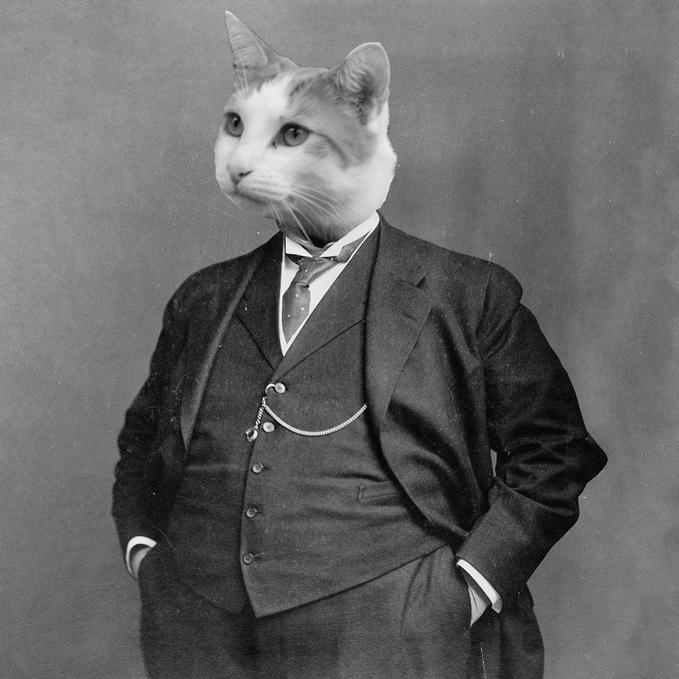
At this point Tiny Laundromat Dog points their eyes toward the rumbling washing machines. They follow the dirty washing of students.
GunUp: a campaign by the USU with miniguns and bombs care package by Thales to fight the global war

Taste baguette on strike after SAlt steals all their baguettes for talking about the protests in France


Whose campaign yellow looks the most like pee: a competition among the candidates
Life moves in fucking circles I tell you, woof woof. One moment you have friend, the next they are getting more pats than you. More votes, more fame, and zen they leave you as their campaign manager and you are back to square un. BARK BARK.
Oh well what do i know, I’m just a Tiny Laundromat Dog.
My dad’s a pastor. You can call me
Tony: Rigatoni

Following suit of Wasabi and Chopsticks, Indian and Greek society change their names to Naan and Spanakopita
“Wow, my ass looks so fine!” says the student who cycled 14-hours straight at the Enviro Fair to get 2 litres of Carrot juice

